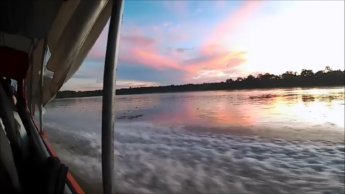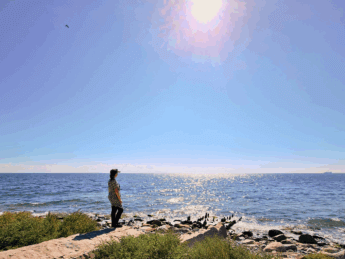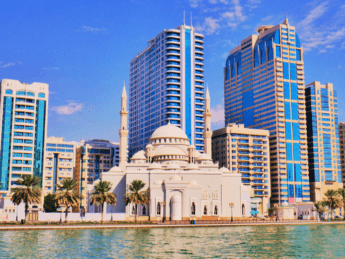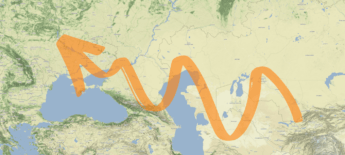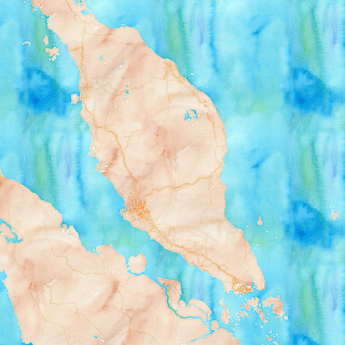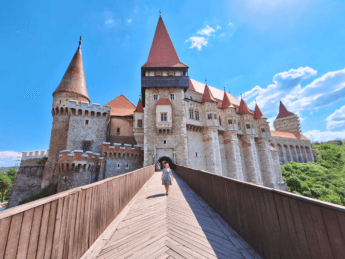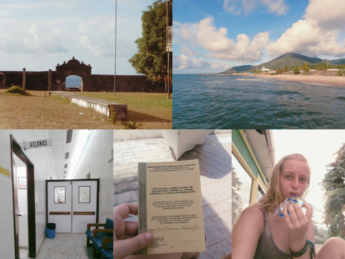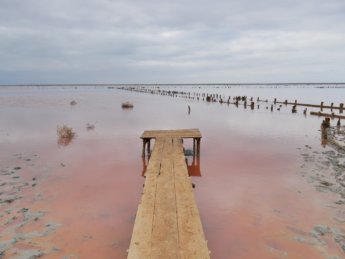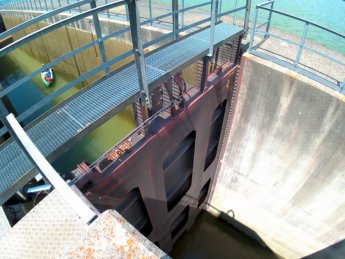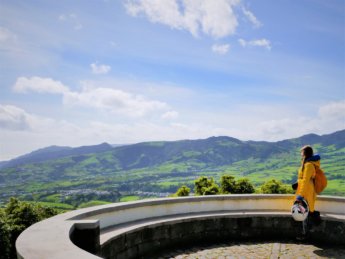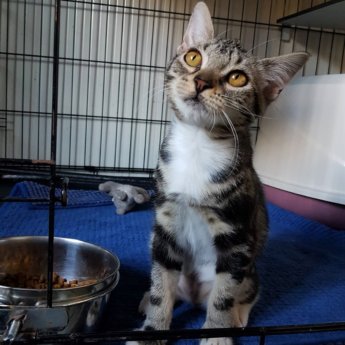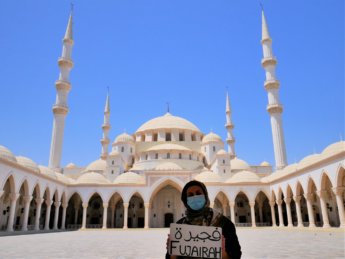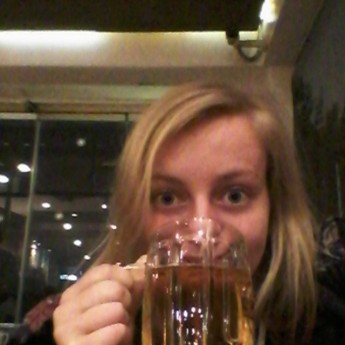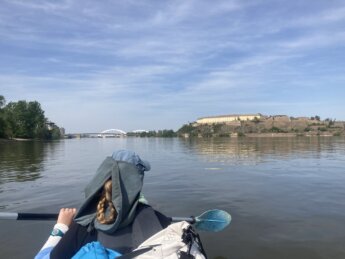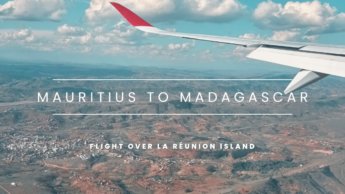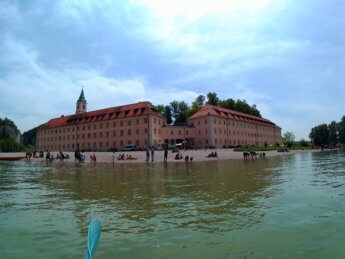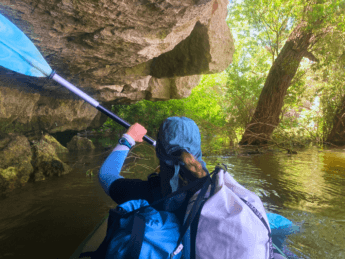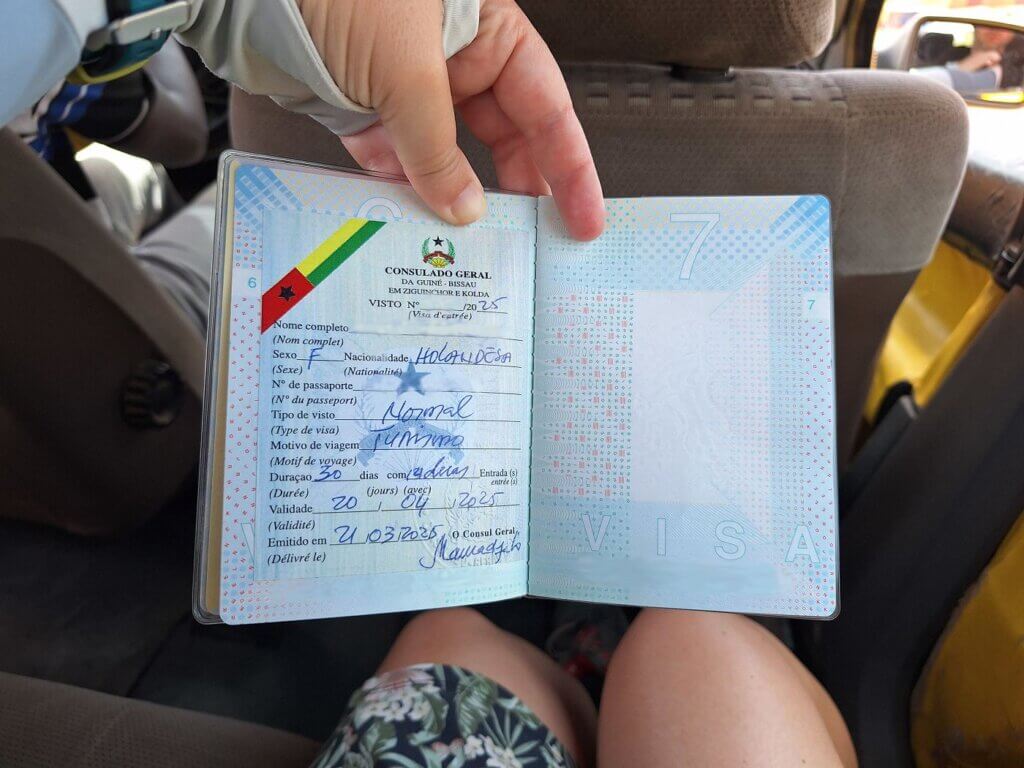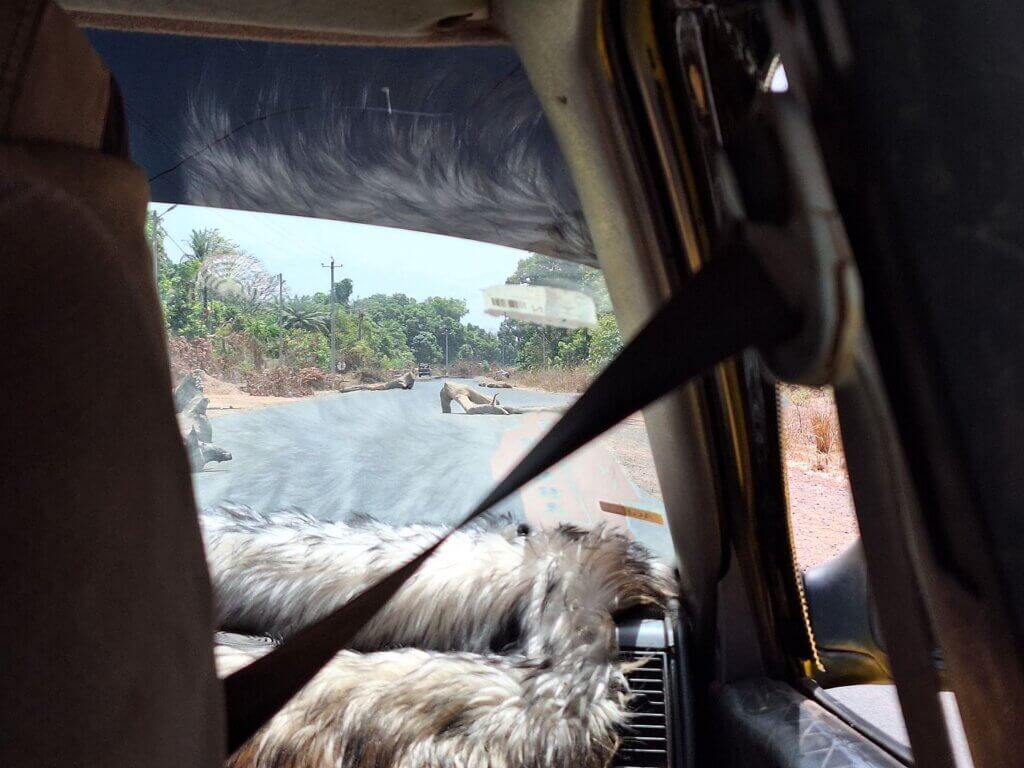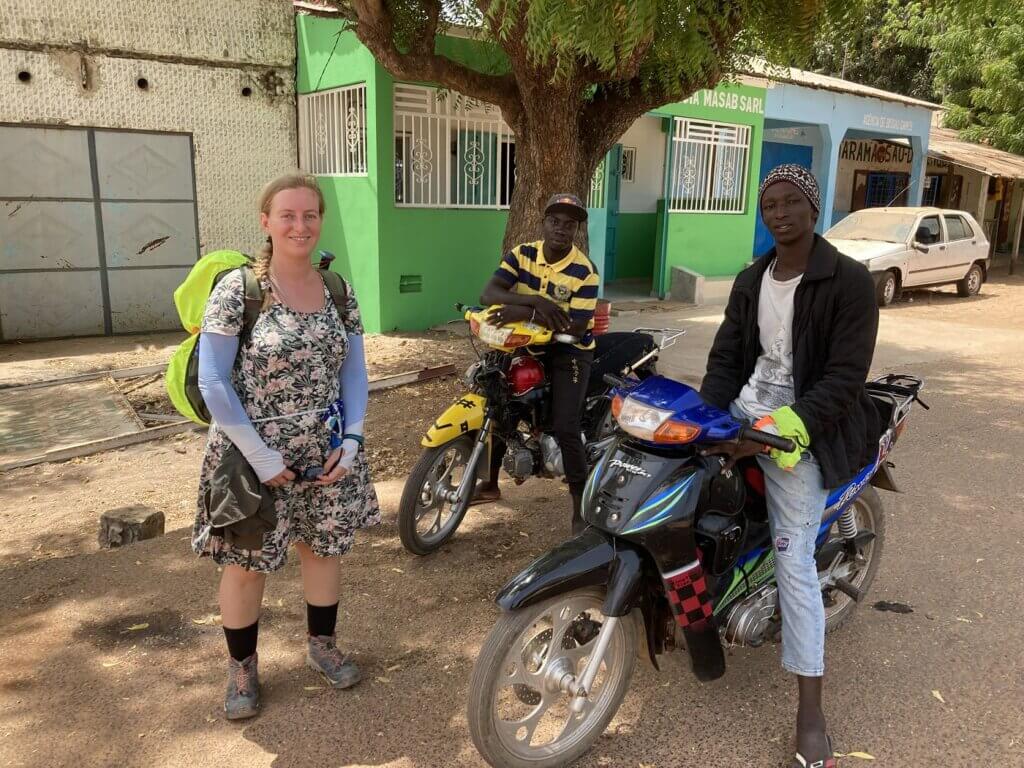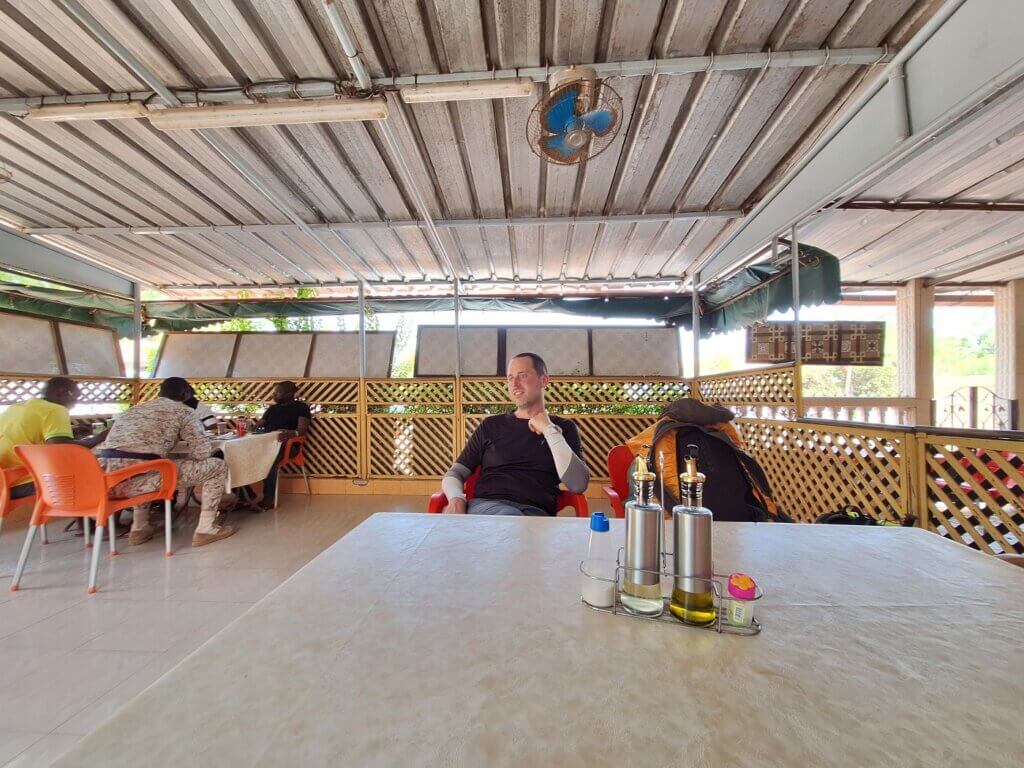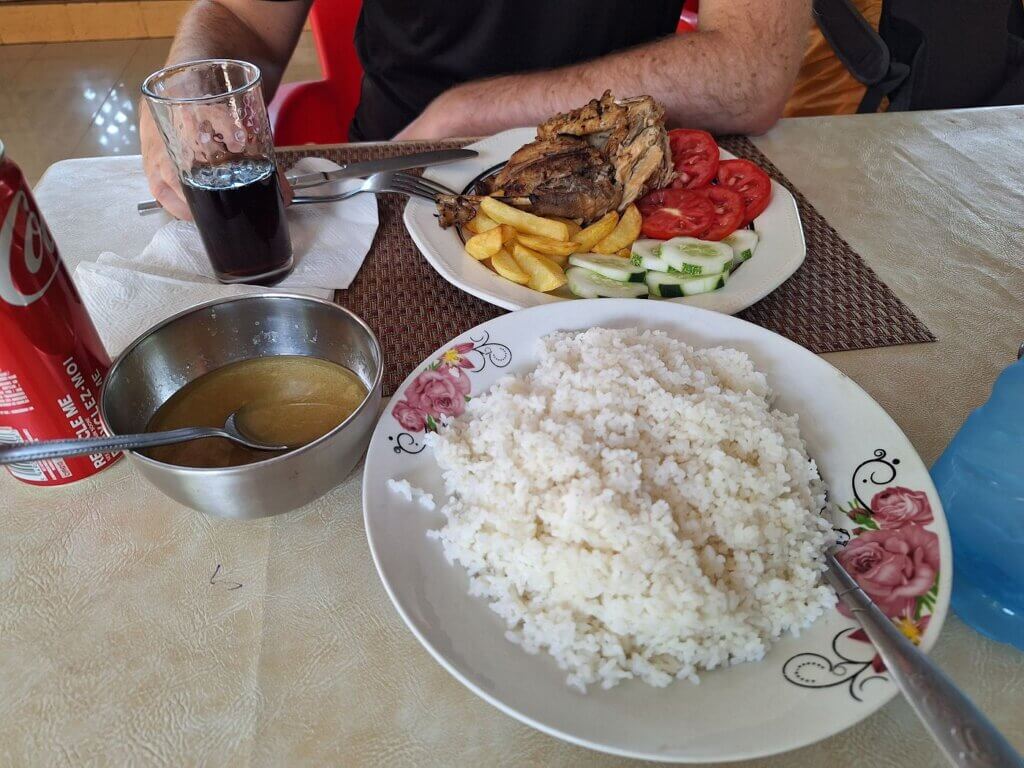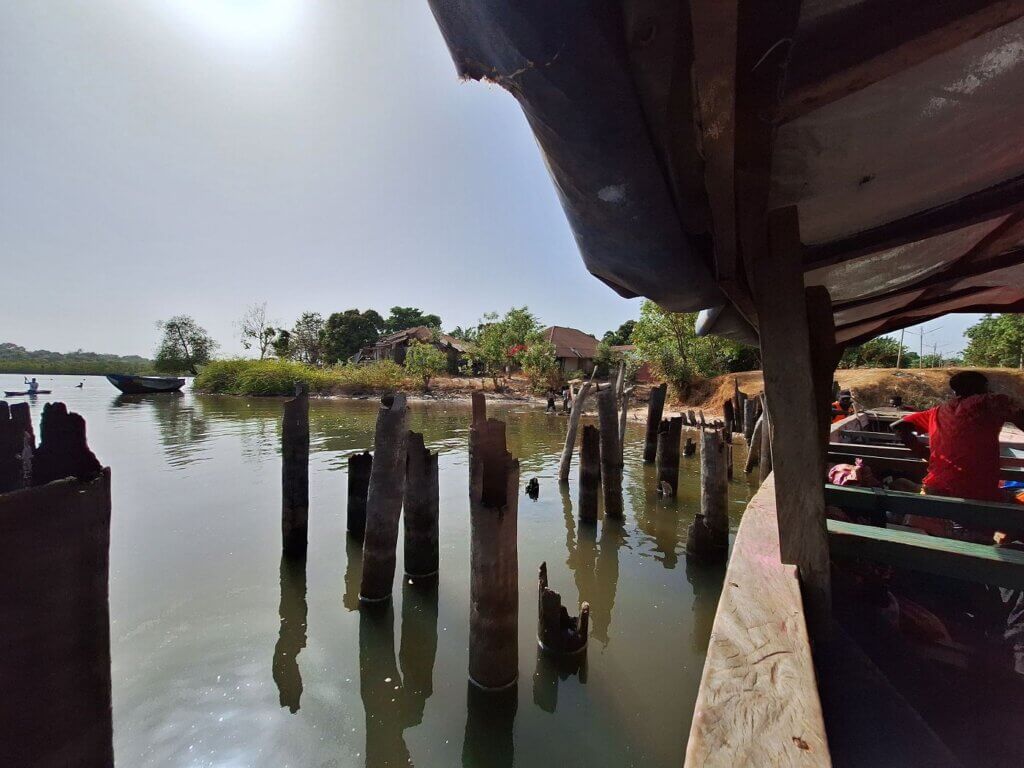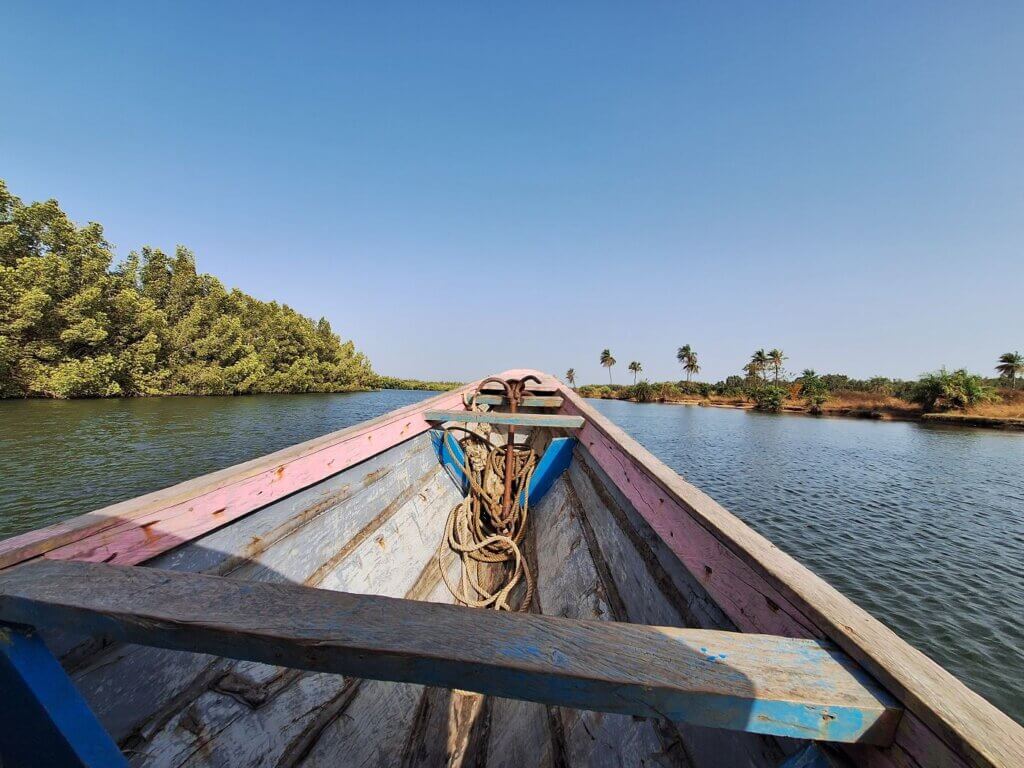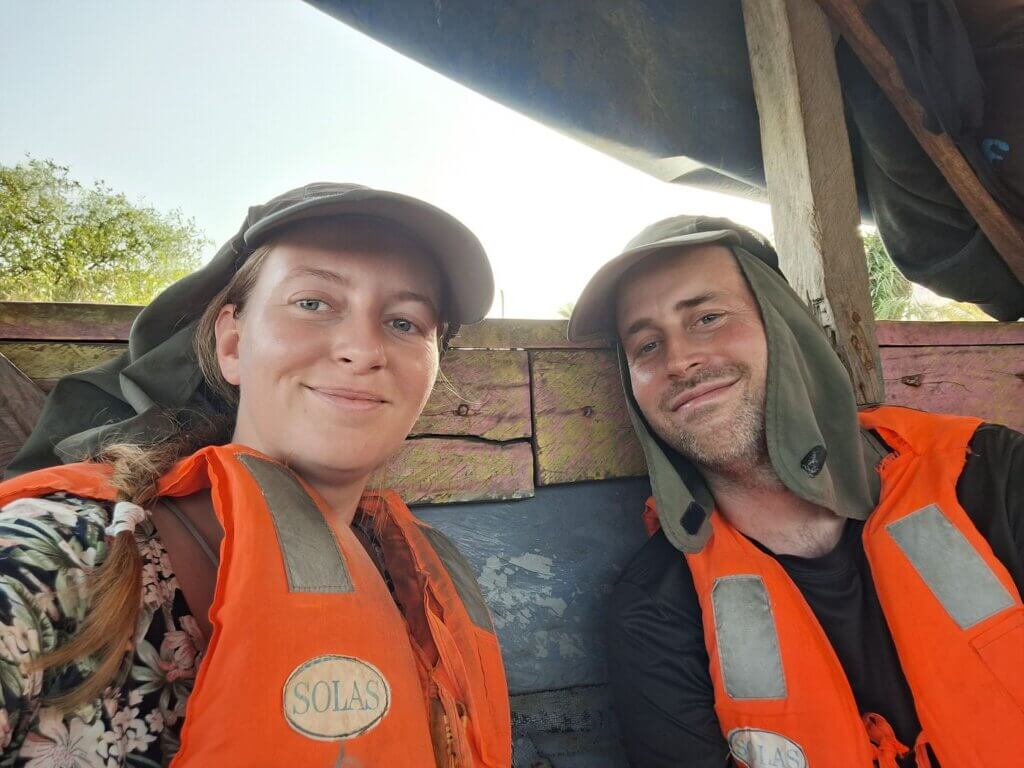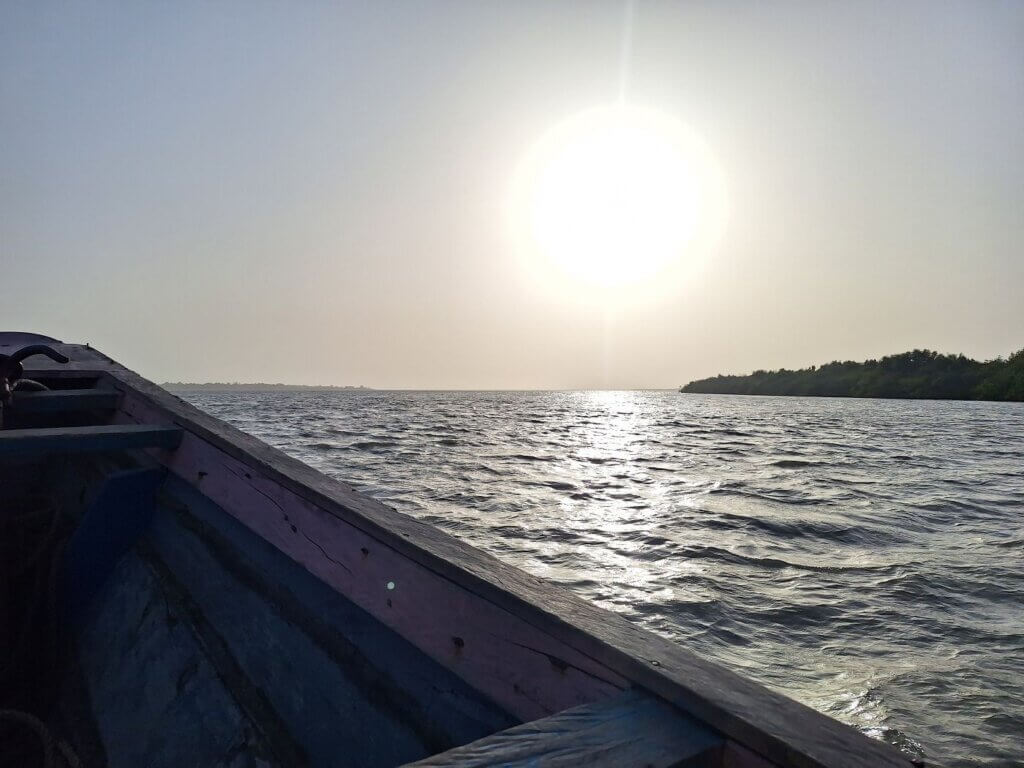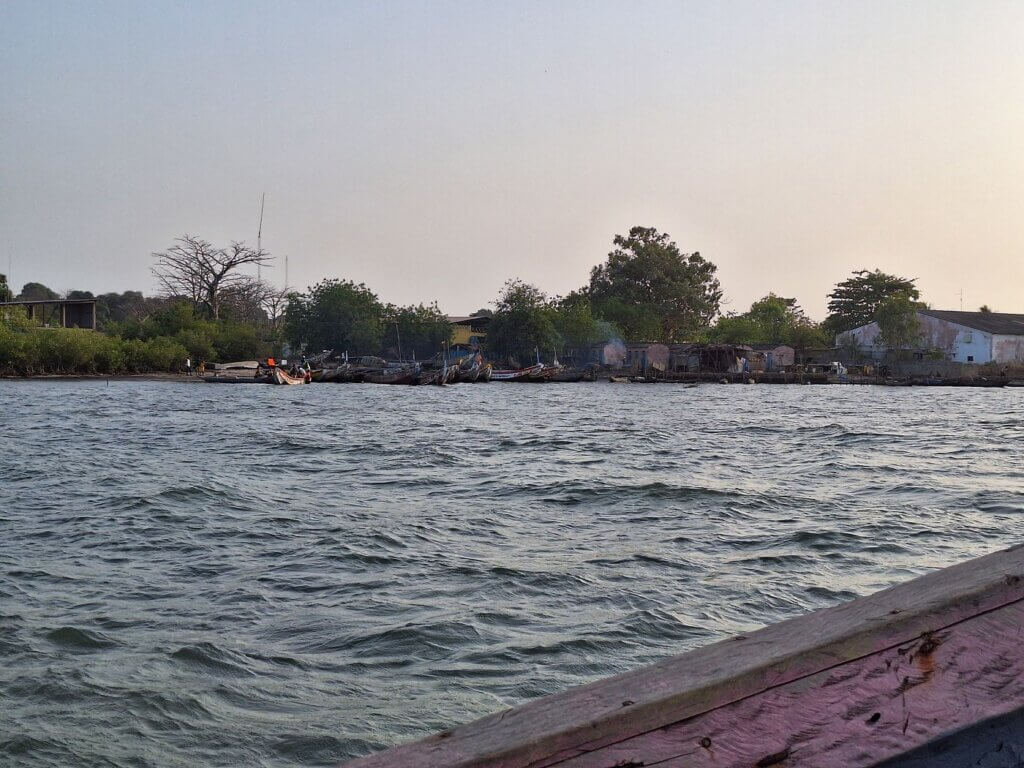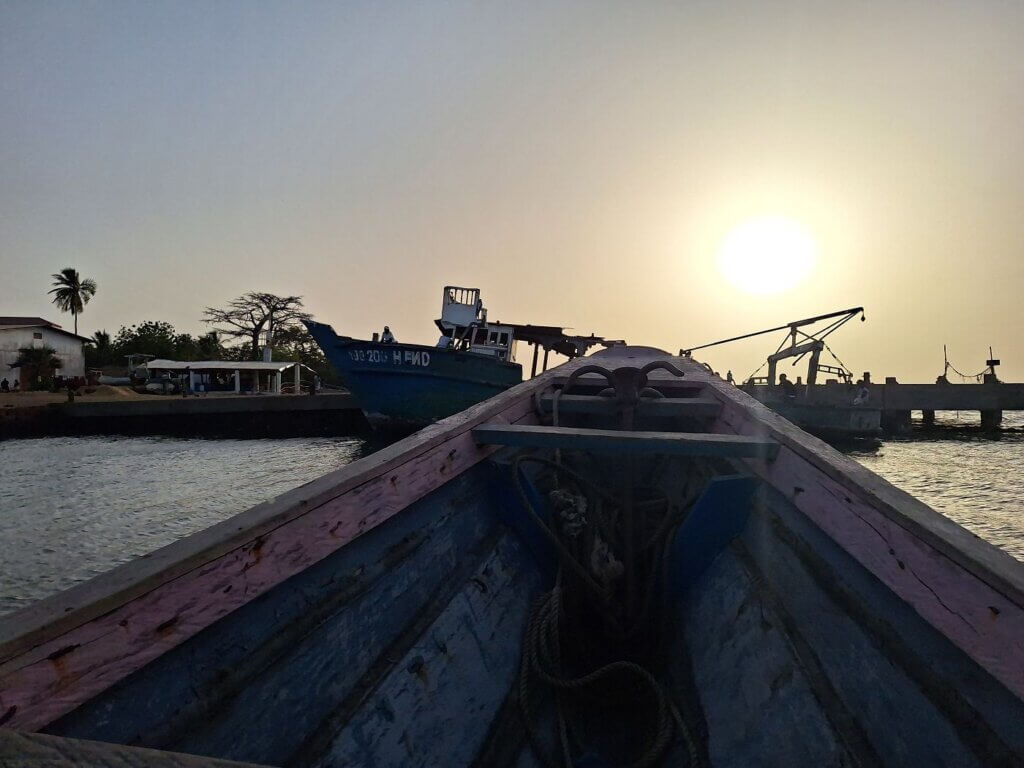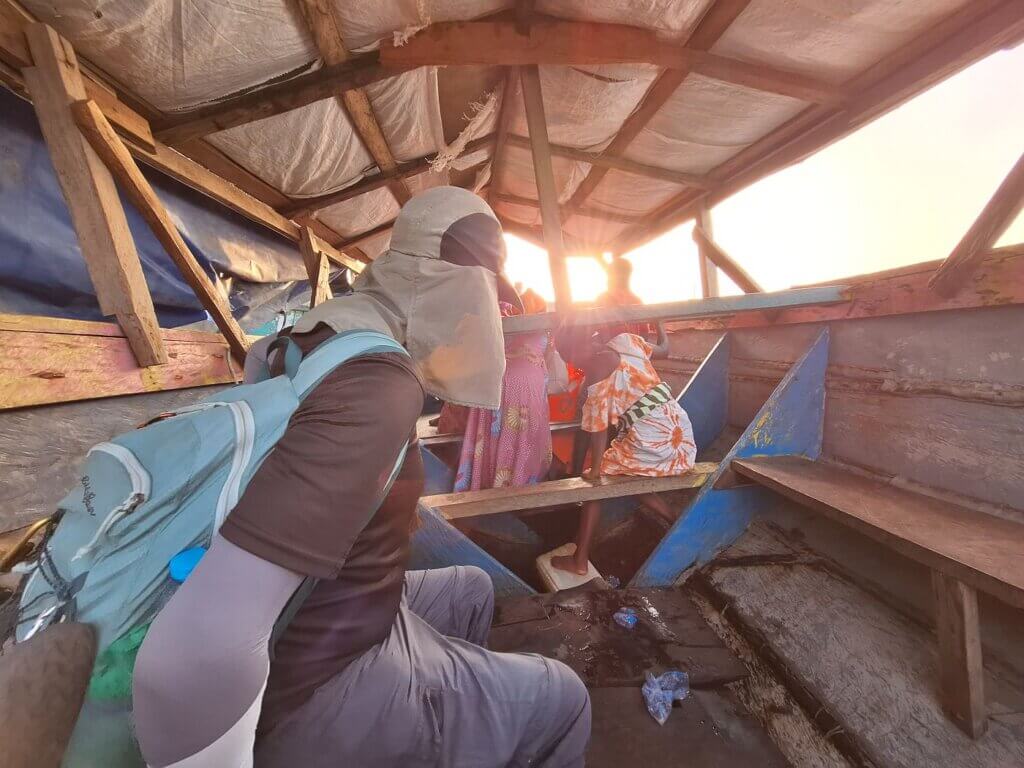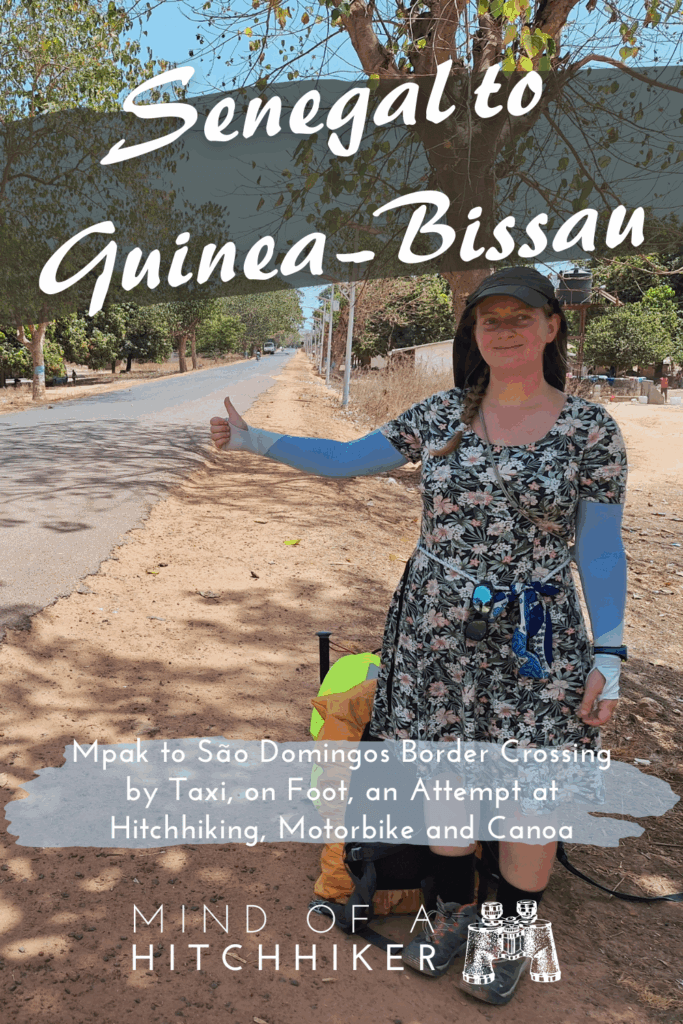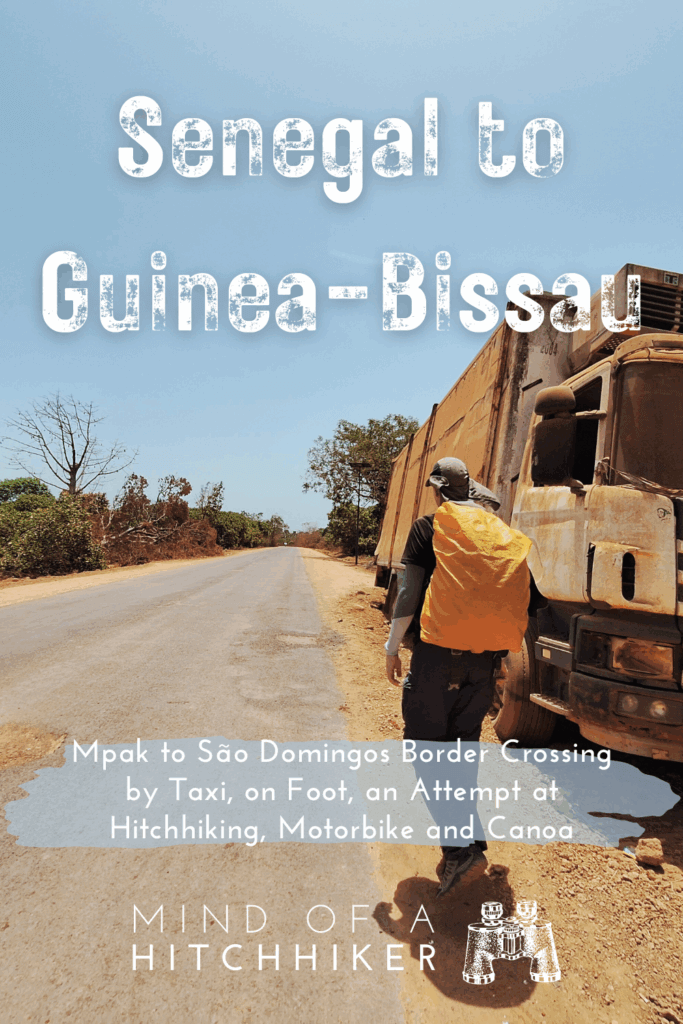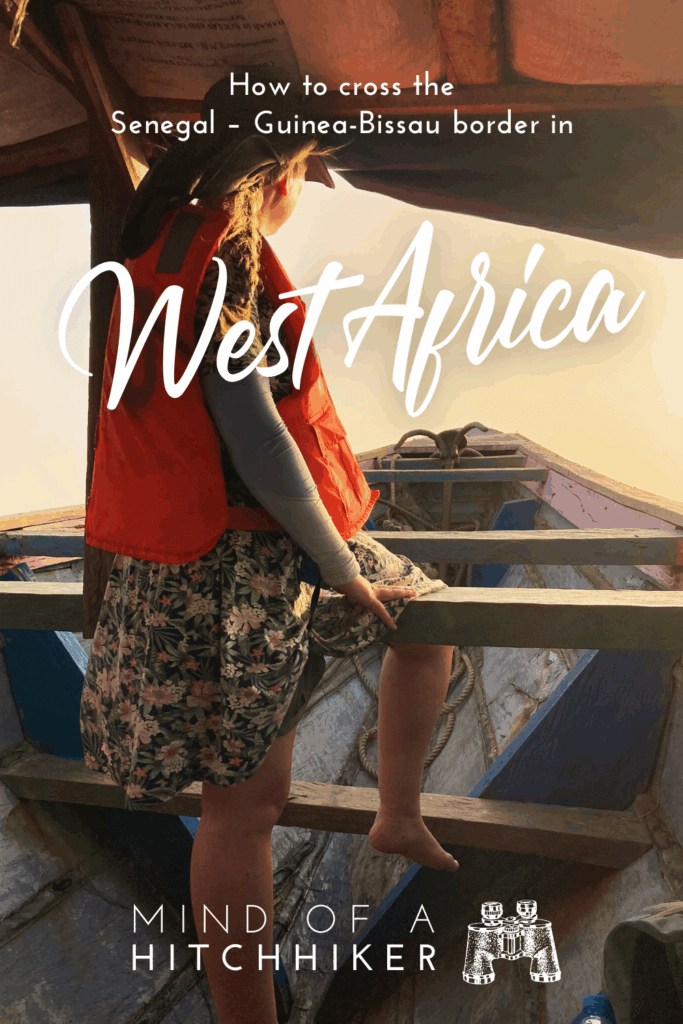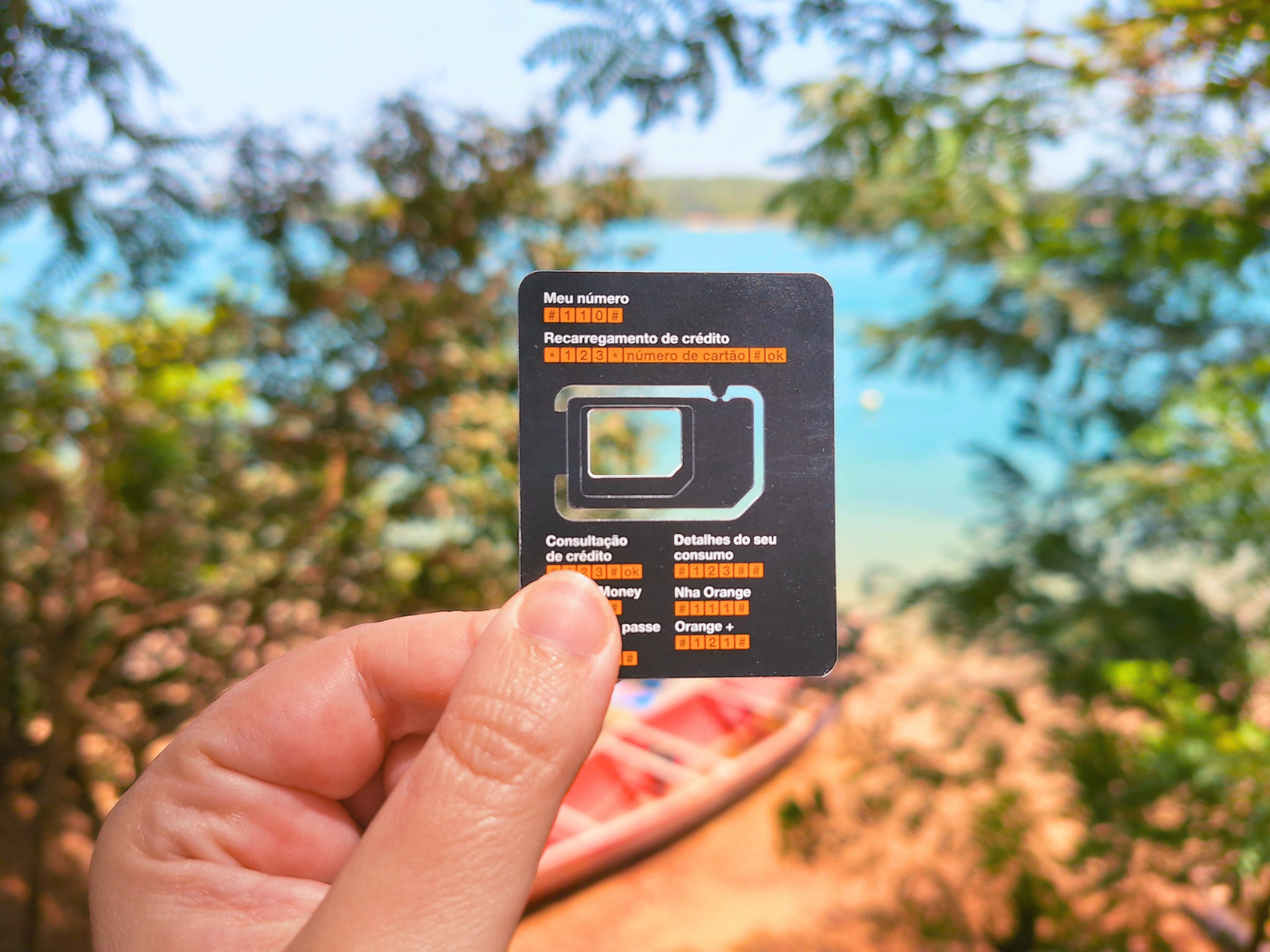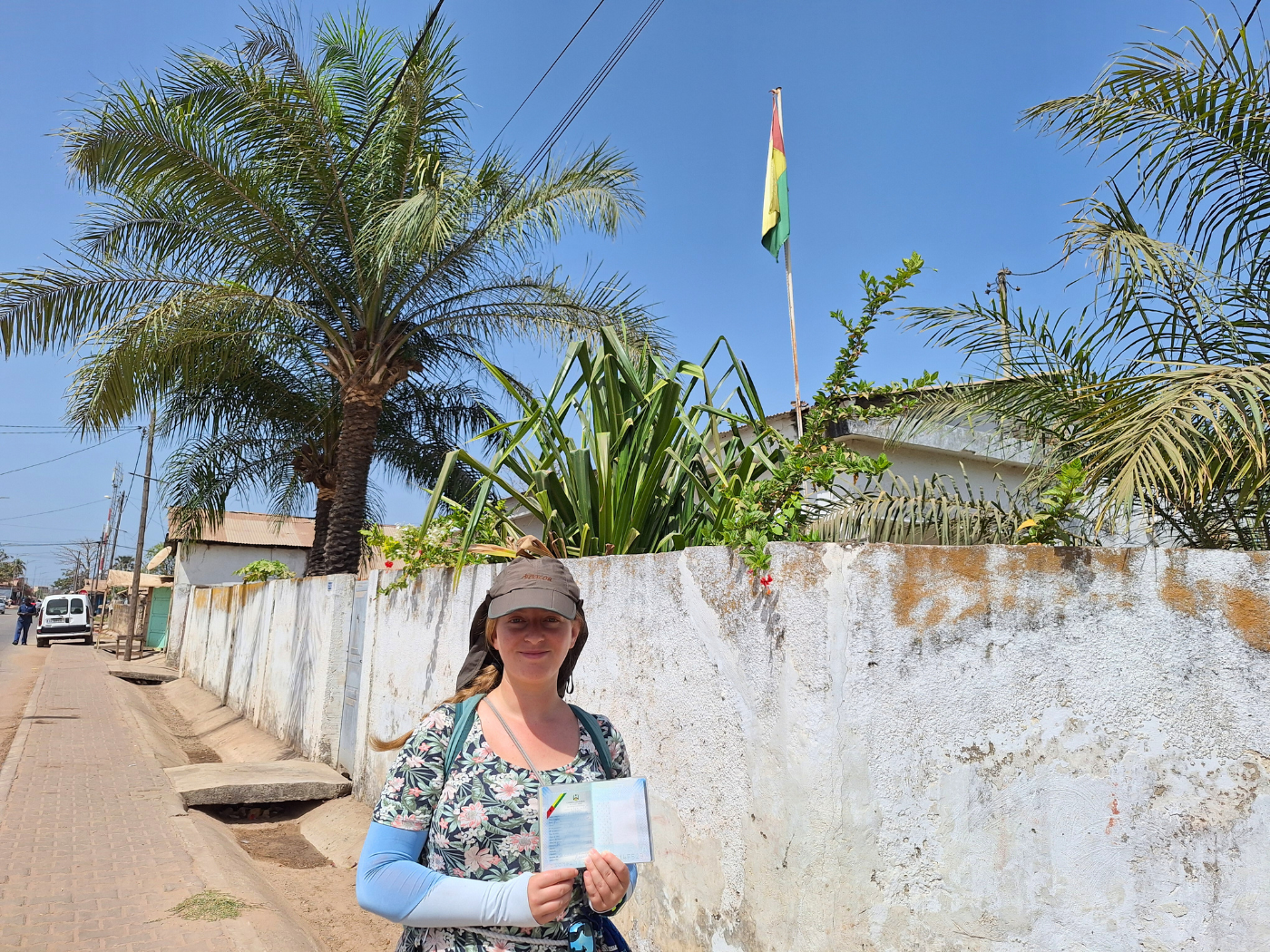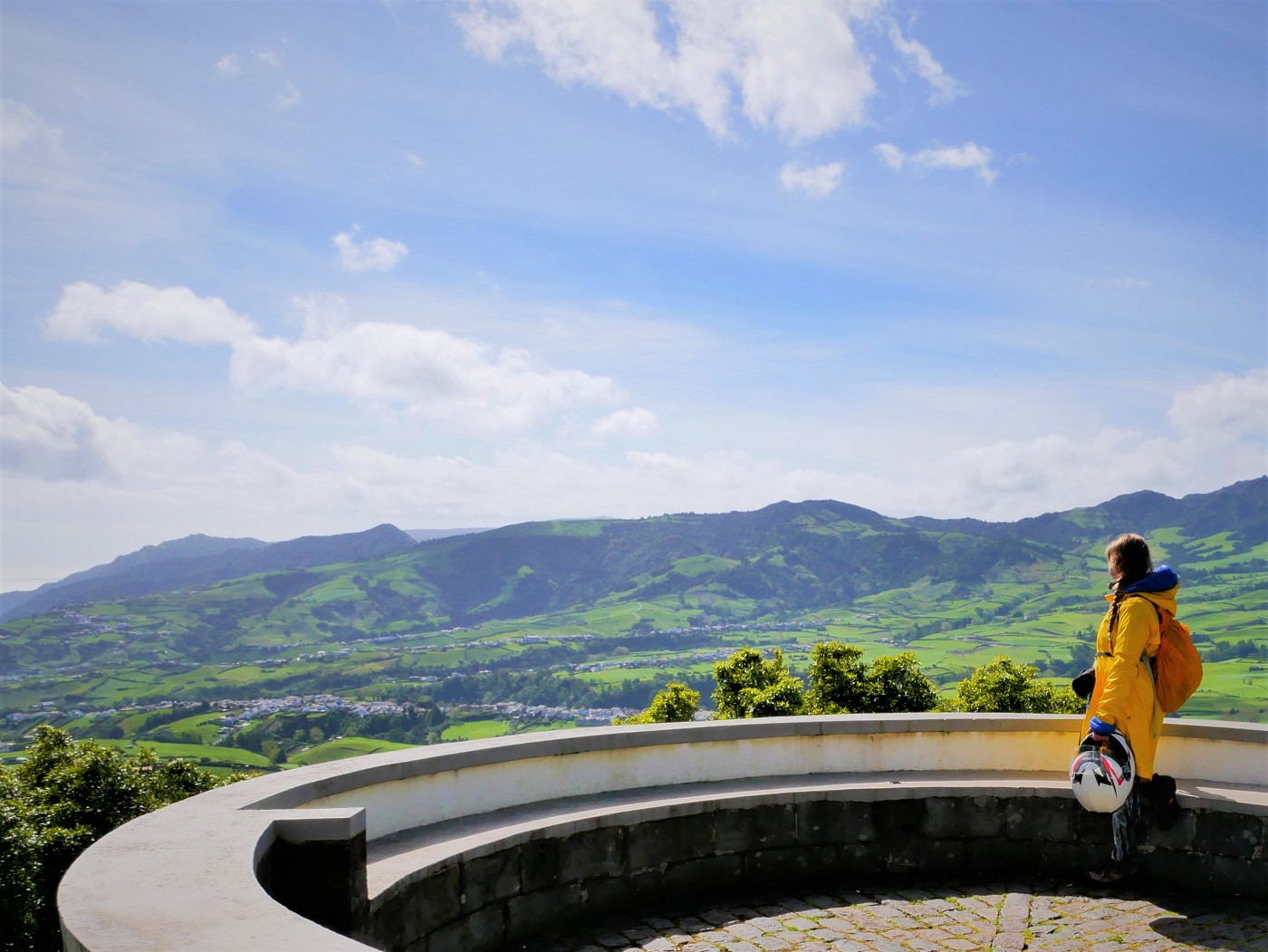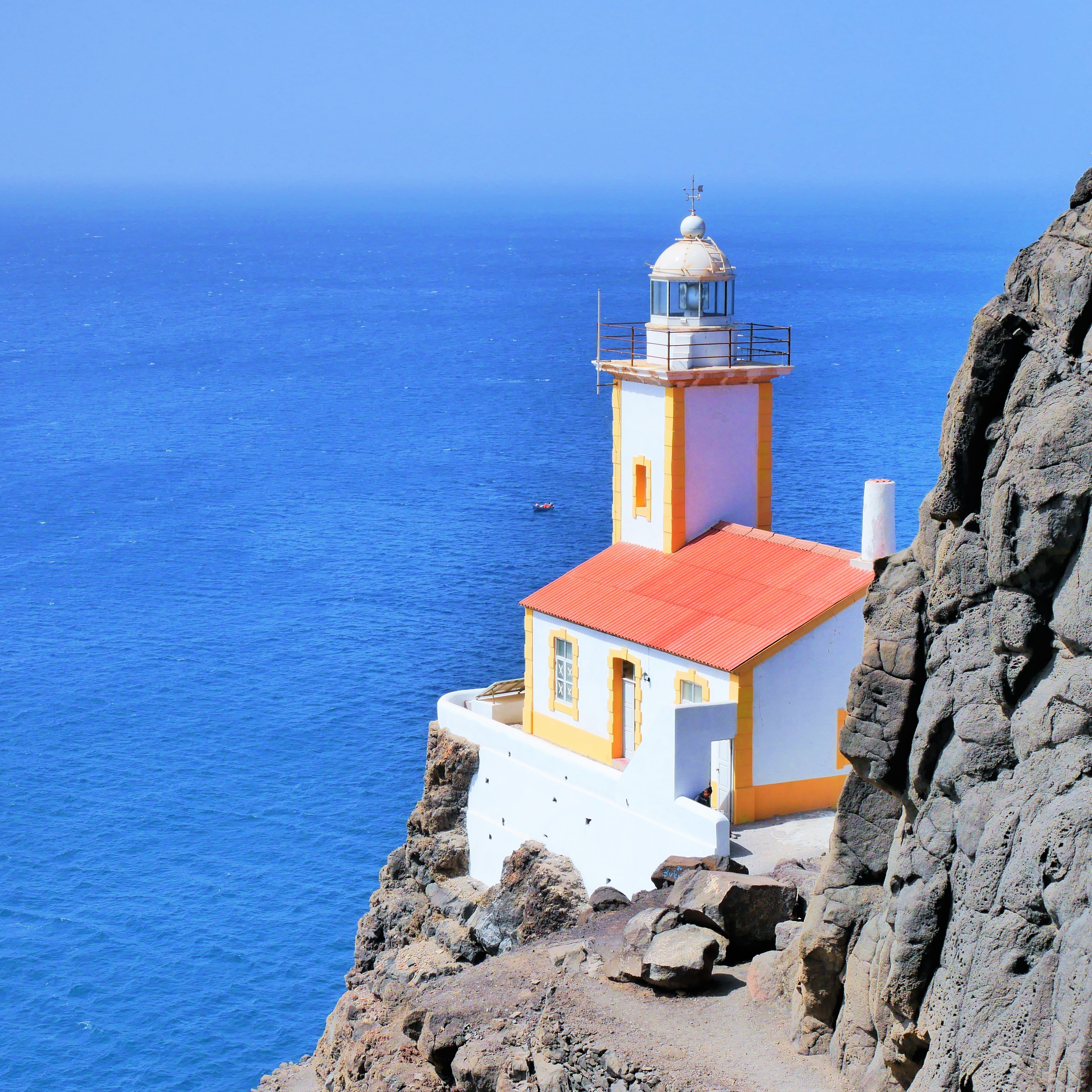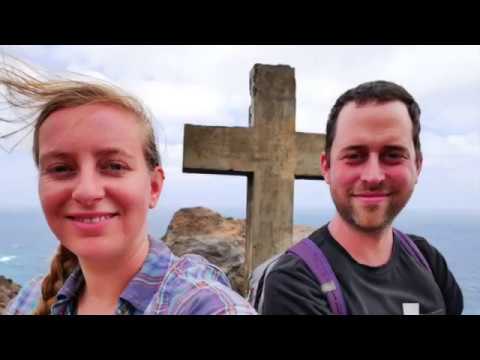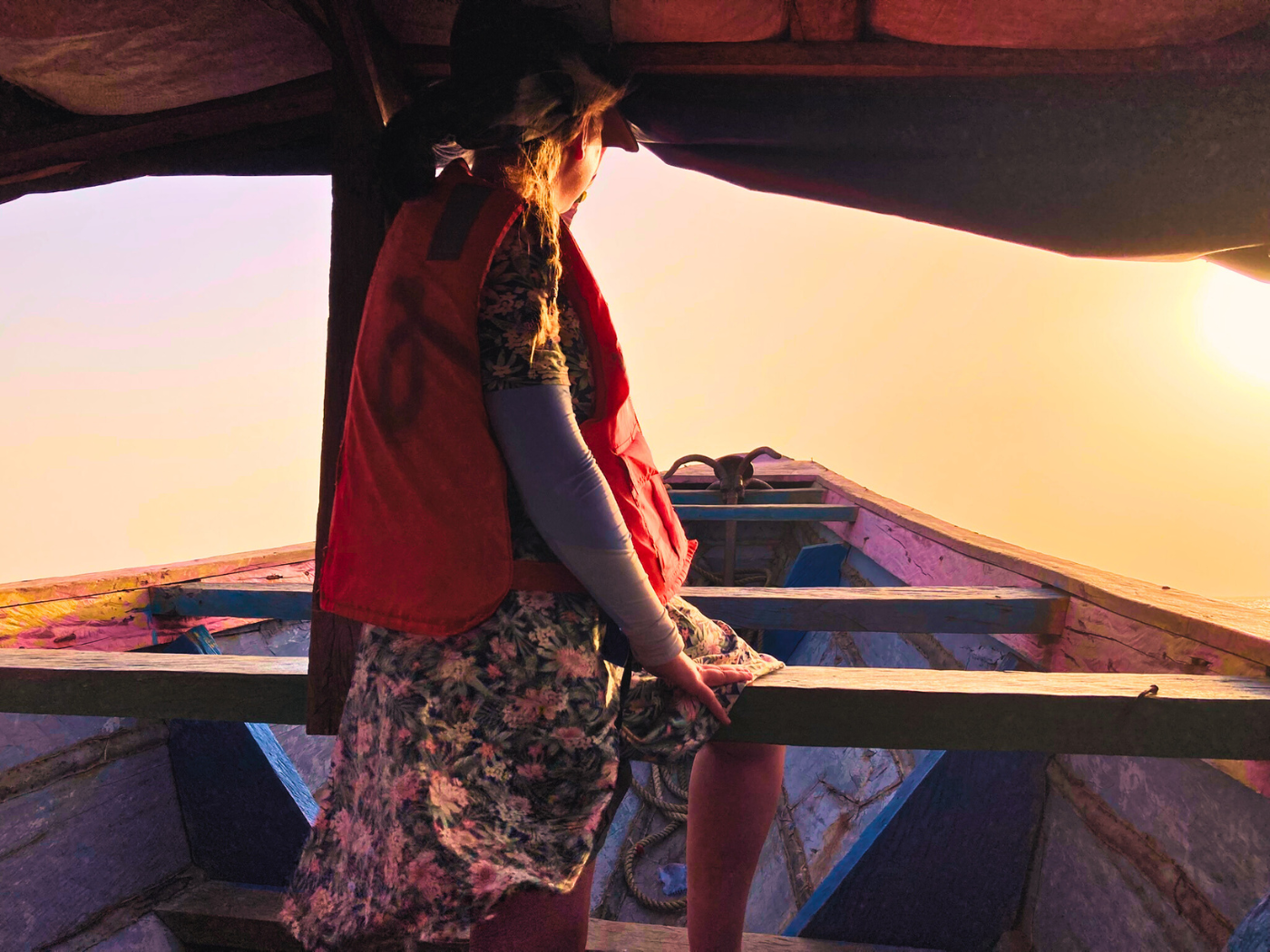
This article is about the land border between Mpak (Mpack) in Senegal and São Domingos in Guinea-Bissau. On the 22nd of March, 2025, we traveled from Ziguinchor in Senegal to Cacheu in one day. We took a taxi, crossed the border on foot, tried to hitchhike, and eventually took two mototaxis to the port, where we boarded a pirogue/canoa. Read on to find out how we did it.
Contents
- 1 Zichuinchor to Cacheu instead of Bissau
- 2 Taxi from Ziguinchor to Mpak + Senegalese Immigration
- 3 No Man’s Land to Guinea-Bissau
- 4 Bissau-Guinean Immigration + Guinea-Bissau Visa
- 5 Hitchhiking Two Mototaxis to São Domingos
- 6 Lunch in São Domingos + Waiting for the Canoa
- 7 Canoa Mangrove Journey from São Domingos to Cacheu
- 8 Arrival in Cacheu
- 9 Helpful post? Consider buying me uma cerveja!
- 10 I’d love it if you could share this post with your buddies
Zichuinchor to Cacheu instead of Bissau
While writing a page about Guinea-Bissau to aid our travels in West Africa, I stumbled upon the small village of Cacheu by the river of the same name. When it was time to finalize our plans before leaving West Africa from Bissau, I found a route from the small port of São Domingos through a maze of mangroves to Cacheu. If there’s a port, there are pirogues. And if there’s pirogues, there’s a way. I imagined it would be like how we left Mar Lodj via the Saloum Delta to get to Toubakouta instead of driving around. So far, traveling by boat in Africa has always been more pleasant than getting sweaty in an overfilled sept-place.
But first, a reality check. We contacted a hotel in Cacheu on Google Maps via WhatsApp. At every stage, I told Jonas “If they’re unresponsive or unsure, we’re just heading straight for Bissau”. But they were responsive to my messages translated into Português. And they said the pirogue/canoa from São Domingos won’t just something we’d have to arrange ourselves at great cost; there’s a public pirogue that travels between Cacheu and São Domingos three times a week. Somewhere else online I found that the journey takes about 2 hours. Here’s the schedule:
| Monday | Tuesday | Saturday |
| Cacheu – São Domingos
9:00 |
Cacheu – São Domingos
9:00 |
Cacheu – São Domingos
9:00 |
| São Domingos – Cacheu
16:00 |
São Domingos – Cacheu
16:00 |
São Domingos – Cacheu
16:00 |
And it just happened that we were scheduled to leave Ziguinchor on a Saturday. Just the departure time of 16:00 seemed difficult. But if we would do work in the morning in Ziguinchor and only leave between noon and 13:00, this might just make sense. The trickiest thing is trying to stay comfortable as Casamance and Guinea-Bissau heat up a lot between 14:30 and 17:30 each day. We can hope for a cooling breeze.
Taxi from Ziguinchor to Mpak + Senegalese Immigration
Packed and ready, we walked out of our hotel in Ziguinchor at 12:05. The owner Christian had allowed us to stay longer, which we’d used to get some more work done. Once outside, we looked for a taxi, but since it’s close to some sensitive building, all drivers were told to continue driving and we were told to walk on the other side of the road by a guy with a rifle. Annoying.
We found a guy and Jonas asked the price. I heard him say 7000, and without negotiation we agreed. With our visas ready, we began our drive out of Ziguinchor, where the roads are of mixed quality. Luise and Alex had told us that the road to the border was terrible, but I thought it was… okay? There were many police and gendarmerie checkpoints, but none of them stopped us, thankfully. Closer to the border, there were logs on the road we had to swerve around. We think it was traffic calming. Our driver wasn’t so sure.
And soon we arrived at the lengthy queue of trucks waiting to cross. We drove past them until there was a barrier in the road, some 100 meters from the Senegalese immigration office. There were some boys coming to our car that we sent away by saying we’re not interested. It was 12:35 and the cost was indeed 7000 XOF, to Jonas’ surprise.

We had very little water, so we first tried to buy one or two small bottles. But they only had big bottles here or the small plastic bags of water. We bought two water baggies and opened one to fill up our bottle. Then we walked to the Senegalese immigration for our exit stamp. While we were buying water, a shared van arrived at the border and two fellow tourists hopped out.
They went through immigration before us, but the Asian guy with the Lithuanian passport was sent to a special office because the officer didn’t believe him. Didn’t believe Lithuania is a real country? I’ve heard that happen to other travelers from Slovenia, Slovakia, and Liechtenstein. But he got through before us either way.
We queued behind some local people crossing with ID cards. These people had to hand over money to the immigration officers. Bills of 1000 or 2000 XOF. Corruption? When it was Jonas’ turn, his turn was immediately finished. He expected to be hustled for money, but he just got his stamp. For me it was the same. No talk, just stamp. And out we were at 12:45.
Goodbye Senegal, it’s been fun.
No Man’s Land to Guinea-Bissau
Outside, we looked if anyone called us into another office for a customs check. Nothing, so we walked past the next road barrier. We walked to the van that had carried the two foreigners and had a chat with them. The other guy is from Spain. They’re going to Bissau with this van. We told them we’re going to São Domingos and Cacheu. They then drove off.
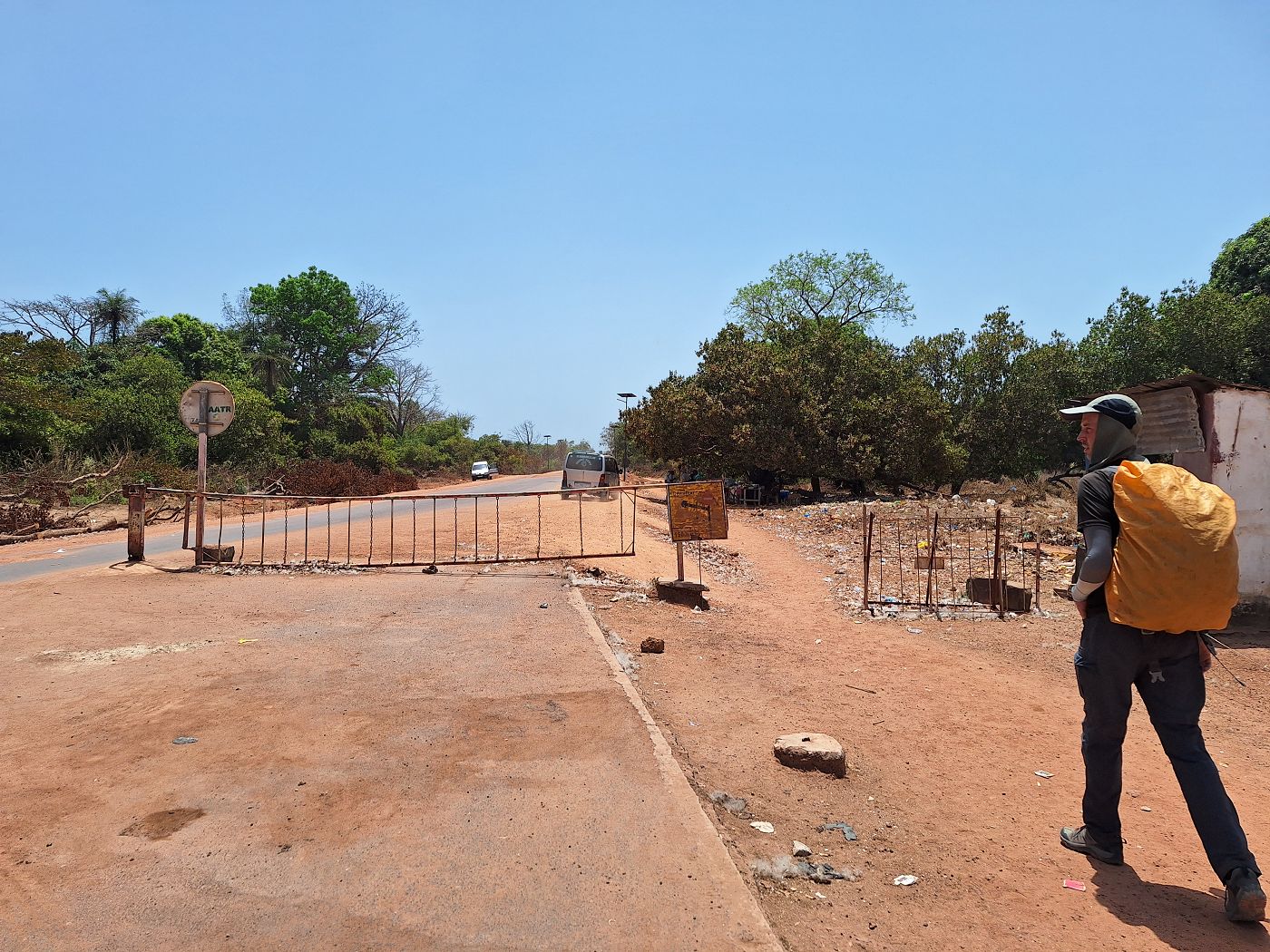
We quickly looked around if there’s any transport on offer here, but there wasn’t any. It’s a ~600 meter walk in the heat to the Bissau-Guinean side of the border. At least, according to my map. We began our walk next to the road through no man’s land. There was an abandoned truck, some free-moving goats, lots of trees and a breeze.

Mpak is the only asphalted land border between Senegal and Guinea-Bissau. Though there are a few more options to cross, this is the main one. This is the site where hundreds or thousands of refugees crossed whenever there’s rebellion or civil war either in Guinea-Bissau or in Casamance. The area used to be mined as well, though they’ve been removed. Still, I’m sticking to the well-trodden path in this area.
The walk wasn’t bad and I didn’t break out into a sweat. We wore our sleevies and sun hats and were totally fine. I carried the laptop bag to one tree in the distance and then Jonas took it the rest of the way.
After a long bend, the next border infrastructure appeared. A boom gate and the van with the Lithuanian and Spanish guys. We were only a few minutes behind them.
There was a lady in camouflage I asked “Onde é imigração?” She understood and pointed to some building far away. Between here and there, there was a proper unnamed village with lots of houses, people, and shops. There’s so much going on I wouldn’t be sure if someone had stopped us if we’d just kept walking.

There was a mosque with the flag of Kuwait on the side, which they apparently do all over Africa. Between all the EU and USA flags on projects I’ve seen all over West Africa, Kuwait stands out as an odd one.
Bissau-Guinean Immigration + Guinea-Bissau Visa
Time to use our Bissau-Guinean visa we just acquired the day before in Ziguinchor. One sign pointed towards a building for immigration and across the street was a sign for customs. The cars were on the other side. We went in at 13:00 and checked out the relaxed vibes. Some men and women in uniform, just slowly moving. I said bom dia and received boa tarde in response. They began transcribing the details from our passports in a big book.
It took a couple of minutes, but it was very chill. No questions. Just our entry stamp after a few minutes. We thanked them and walked out, slowly walking past the boom gate to not get stopped by customs. It’s 13:06 and this is officially our favorite land border in West Africa.
I’m so happy to be in Guinea-Bissau. This is our last country on this overland West Africa trip. It also makes me tear up a little.
Hitchhiking Two Mototaxis to São Domingos
No uniformed people stopped us, so we kept walking a few hundred meters more to get away from the border. The village continued to sprawl, with plenty of shops around. It’s funny and wonderful that we can use the same currency, West African CFA Franc (XOF) here in Guinea-Bissau and Senegal.
We find a good tree and put our luggage down in the shade. We decide we’ll try to hitchhike the ~6 kilometers to São Domingos. If it works, it works, and then we can get this little achievement out of the way already. What surprises me is that it’s not as hot as I anticipated. The stories from Luise and Alex indicated that it would be grueling to do anything out here. But it appears we’ve been blessed with a breeze. However, the breeze also makes the tree fluff fly across the road. I’m hoping Jonas won’t get a sneezing fit.
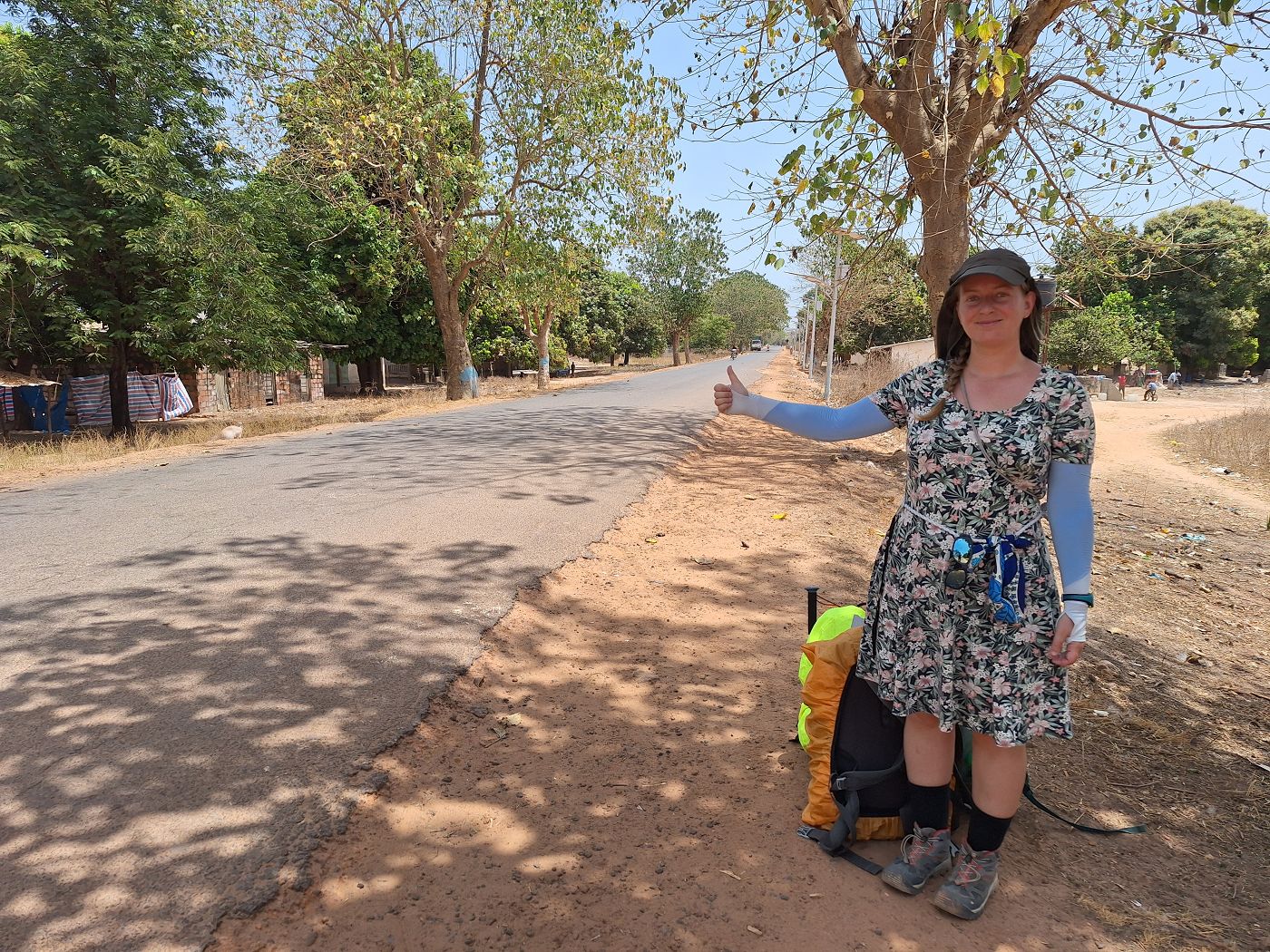
Every now and then, the customs release a vehicle. Most of the time, it’s a full minivan that began its journey in Ziguinchor. Meanwhile, lots of mototaxis stop to ask if we need a ride. For now, we’re saying no. But we end up talking to a guy with too much cargo who is Senegalese and Bissau-Guinean. He asks us about our trip and we tell him about loving Casamance. He says the next time we go to Casamance, we should visit Abéné and hear locals play the djembé drums. Inshallah we return to Casamance, I say, which he repeats back. He insists on giving me his phone number and add him on WhatsApp. I tell him I don’t have internet anymore (true).
A kid with a wheelbarrow keeps hanging around us, but not talking to us. He goes back and forth lighting tree fluff that’s gathered on the ground on fire. He starts a small fire, but it dies out. I don’t think we need more heat.
At 13:22, the Lithuanian and Spanish guys are through customs and we wave their van goodbye. I heard the journey from here to Bissau is terribly bumpy.
A car with Gambian plates drives by and we lift our thumbs. I could see the people in the car had space and considered it, but at the same time, two guys with mototaxis were blocking our view and stopping right in front of us. Oh well.
Jonas and I decide on a time when we stop hitchhiking and will take a mototaxi to São Domingos. We’re not in a hurry since the ferry only leaves at 16:00, but we also don’t want to push it. Besides, we’re getting a little hungry.
At 13:50, we gave up and stopped a mototaxi. I asked for the price in a mix between French and Portuguese. It’s 1000 XOF. But we need two, so the guy stopped another mototaxi guy and we both hopped on after we received helmets. Jonas took the day bag and I only had my backpack. The minute we drove off, one child yelled “BRANCOOO” at us.
The ride was okay at the start. It’s weird to sit on the back of a motorbike not driven by Jonas and I’m not super sure what to do with my hands. But safety first. With my bare legs, I’d sometimes scrape them on the bushes when we went off the road. No damage, no big deal, but I’d suggest wearing long pants for this. It wasn’t dangerous and our drivers kept a good pace. The most dangerous bit was whenever there were cars or trucks on the road competing for the swerve around the potholes with no regard for us.
On the outskirts of São Domingos, the call to prayer started and we drove past another Kuwait-funded mosque. There were several bank branches and ATMs on this section. Luckily, we don’t need cash for now.
We arrived at the road to the port of São Domingos at 14:04. I asked for a photo with our two drivers, since I didn’t have the audacity to take photos from the motorbike while driving. They pointed us to a restaurant there to wait for the boat to Cacheu.
Lunch in São Domingos + Waiting for the Canoa
We asked at the restaurant about the pirogue to Cacheu, and they confirmed the canoa leaves at 16:00. I hope it has a roof to protect us from the sun. They say the exact departure depends on the tide, as high tide is necessary to get through the shallow maze of mangroves.
We sit down at the restaurant for lunch. The only option that’s somewhat doable is chicken (galinha) and rice. There’s a cat at this restaurant I tried to befriend, but she was too afraid.
Next to the restaurant is a shop with an older Portuguese man. He’s wearing an Orange-branded t-shirt, so I ask him where to buy an Orange SIM card. We quickly switch to Spanish as I’m struggling and he speaks really fast. We have a chat about the foreigners that live in São Domingos. He tells me there’s someone from Mozambique (Lusophone country) here married to a Dutch person who works at the clinic. But there are more foreigners here.
I walk to the Orange shop down the street in direction Bissau while Jonas chills. The shop is closed, but I later manage to get a Bissau-Guinean MTN SIM card at a shop run by an Arab guy. Is he Kuwaiti? I’m not going to ask. He types in lots of codes to activate my SIM and get me an internet package of 1GB. I’m online! I text my mom that we’re in Guinea-Bissau.
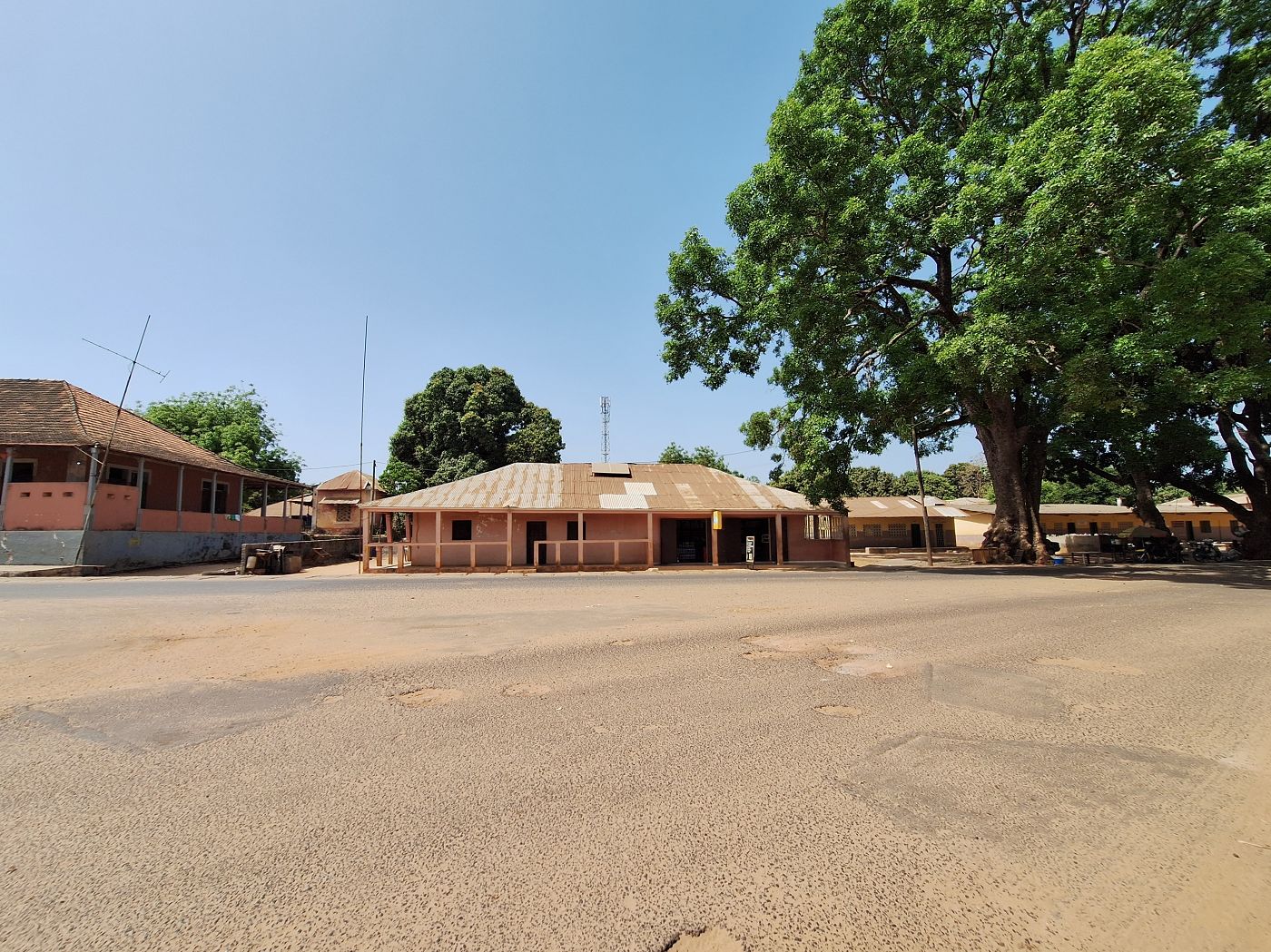
At 15:20, there’s a rumble. White person after white person arrives on a scooter at our restaurant and hotel (Chez Fatumata e Octàvio). I go to the (squat) toilet before all of them need to go. Jonas strikes up a chat with them. In total, there are about 13 people on mopeds, with two tour leaders and one mechanic. Of course, there are some Dutch people in the group. I think I’ve seen their website when I was doing research into this West Africa trip. And yes, I found them and this trip from Dakar to Guinea-Bissau, which costs €2750 per person (not including airfare and visas). Though it couldn’t be me (I’m not a confident scooter rider), this might be interesting if you don’t want to organize things yourself.
We had a good chat with the Dutchies. Jonas laughed when we exchanged where we’re all from: Eindhoven, Leiden, Rotterdam. Jonas knows all these places in the Netherlands. When we meet German people and ask where they’re from, most of the time we have no fucking clue where city XYZ with over 100.000 people is.
One of the tour organizers recommends us to go to Canchungo and stay at Casa Canchungo as it’s lovely for kayaking in the mangroves. I’m not sure if we’ll have time for that before going to Bissau and the Bijagós Islands. He also says that our ferry will take about 3 – 4 hours. I thought it was two? But okay, I guess he knows best.
Jonas checked out the waterfront to see if there’s any activity with canoa to Cacheu. But there’s nothing. At 15:48, we leave the restaurant and wish the moped people a good trip. They’re driving to Bissau tomorrow and will then visit the Bijagós Islands as well.
Canoa Mangrove Journey from São Domingos to Cacheu
After dropping off our luggage at the port of São Domingos, I stay with it while Jonas goes to buy water. There are a few ladies waiting with us with luggage, so it seems the trip is on. When Jonas returns, one of the guys here tells him to get us registered at the capitania. Wow, so official! He goes and returns a few minutes later.
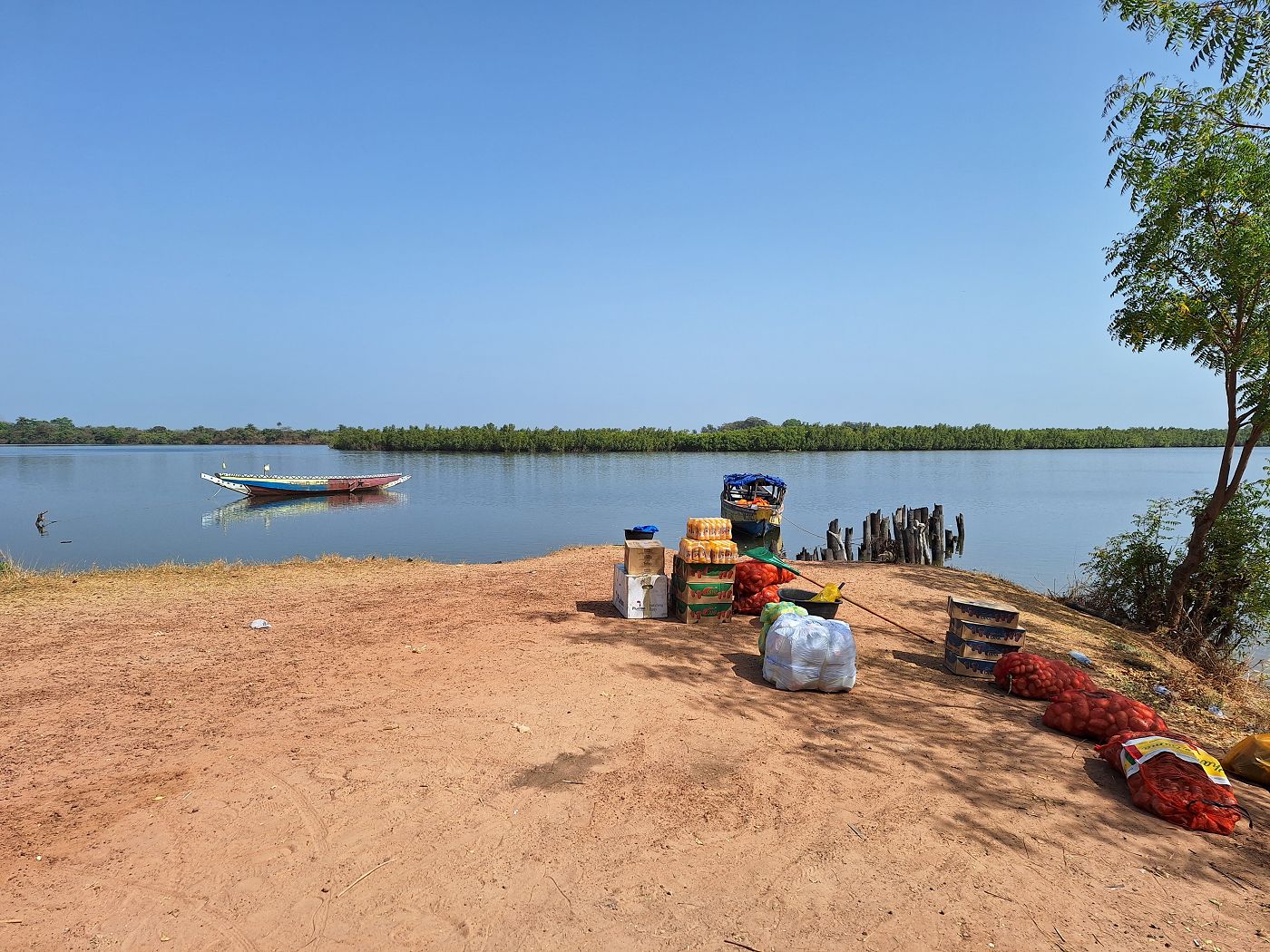
The jetty is nonexistent, and I have a feeling we will have to take off our shoes to embark. Meanwhile, a guy from the UK named Jack (?) walks over. We have a chat while he looks at the boat situation, speculating alongside me. He leaves after five minutes when Jonas returns.
At 16:08, the three men start loading goods into the boat. A few minutes later, it’s time for people. I take off my shoes and switch into flipflops. The guys take my backpack and put it in the goods hole.
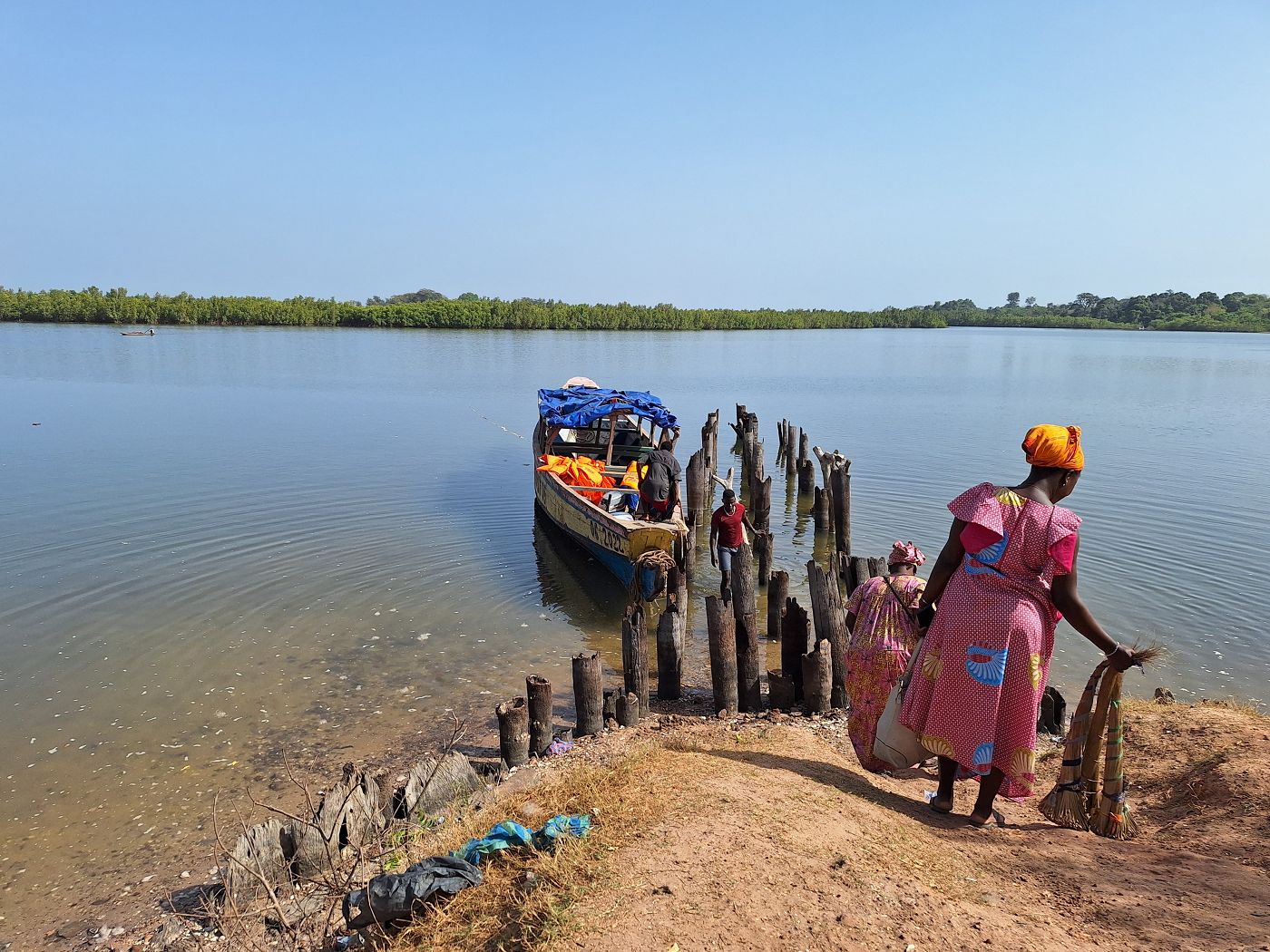
It’s quite a challenge to get inside. I have no idea how the oldest lady did it. The space in the boat is quite vertical. Little crabs that had made this boat their home scurry away up the walls of the hull. I have to climb over a big piece of rusty metal, which later turns out to be the boat’s rudder. With the flipflops, I have no grip on the wall. While I’m trying to get to the front of the boat, a goat is loaded in, so I have to wait until the poor animal is inside. I thank the two guys who helped me get to the plank section, where I can independently clamber to find an okay seat. I regret not being more flexible in this moment. One guy hands out orange life jackets.
At 16:27, the guys lift the anchor and push us off. Someone immediately turns on the music. I wonder where our laptop bag is, and Jonas says it ended up on the pile of luggage that’s now in the sun. Upon request, he climbs his way to the pile to retrieve it. It also has our water bottles and snacks.
There are lots of small crabs in the boat and I hope they won’t touch me. Besides that, we’re traveling with one baby, four women, one male passenger, three guys who are employed on this boat, and that one goat. After a few minutes, one guy comes to write down our names. I show him how to write it on my phone, and he takes it down. Later, this ledger makes the rounds in the boat to anyone who can read, so they all laugh at our weird names (in a light-hearted way).
The rusty piece of metal that’s the rudder goes behind the boat, while the engine goes into a square hole in the back of the boat. Two guys scoop water from the boat with a cut-open water container. This doesn’t worry or surprise me, because Luise had sent photos and told me about this from their piroga trip from Bissau to Bubaque. After 10 minutes, it’s dry enough in there.
Something touches me, and I get spooked. It’s just the string of my life jacket tickling me, no crab. I try to play it cool and get some nice snaps of the mangroves that are so close to us. But the boat is too deep to have a great view, unless I climb up.
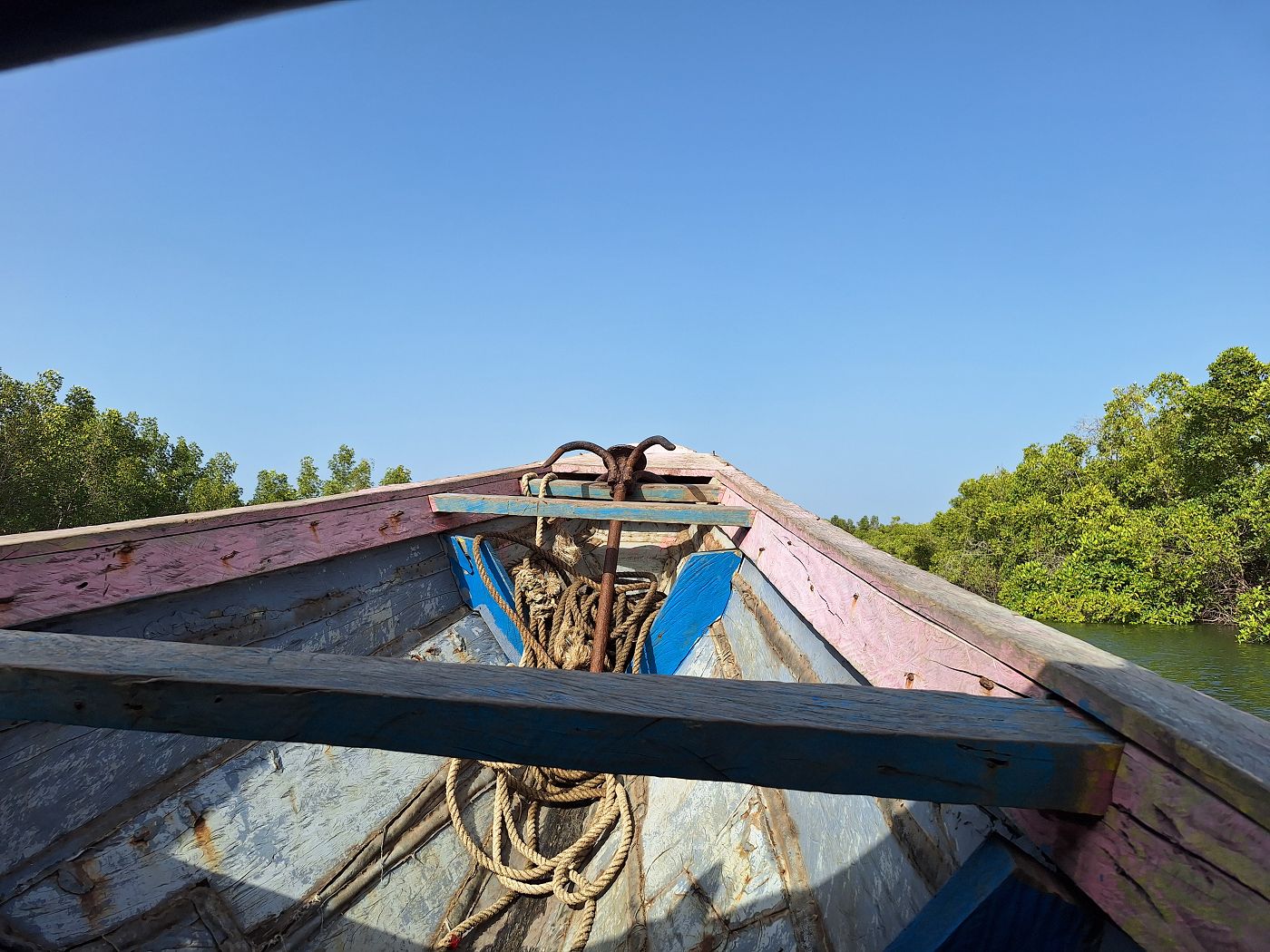
The boat wobbles a lot when people move, but we eventually found our balance. What I liked mostly is that the captain takes our boat as close to the mangroves as possible to provide more shadow. The sun is lowering and the roof doesn’t help our (west) side of the boat. We soon enter a channel between the mangroves I did not anticipate, so I start recording our trip on OSM to later add it to y’all’s offline map apps.

Jonas takes a reinvigorating nap on the boat after 17:00. The angle of the boat is perfect for his head to stay rested backwards instead of nid-nodding like the discomfort of an airplane. One of the boatmen is sleeping on the edge of the boat, and people aboard are worried he’s going to fall off. Meanwhile, another boatman is weaving something with some sticks and a plastic rope. My guess it’s going to be a fishing net.
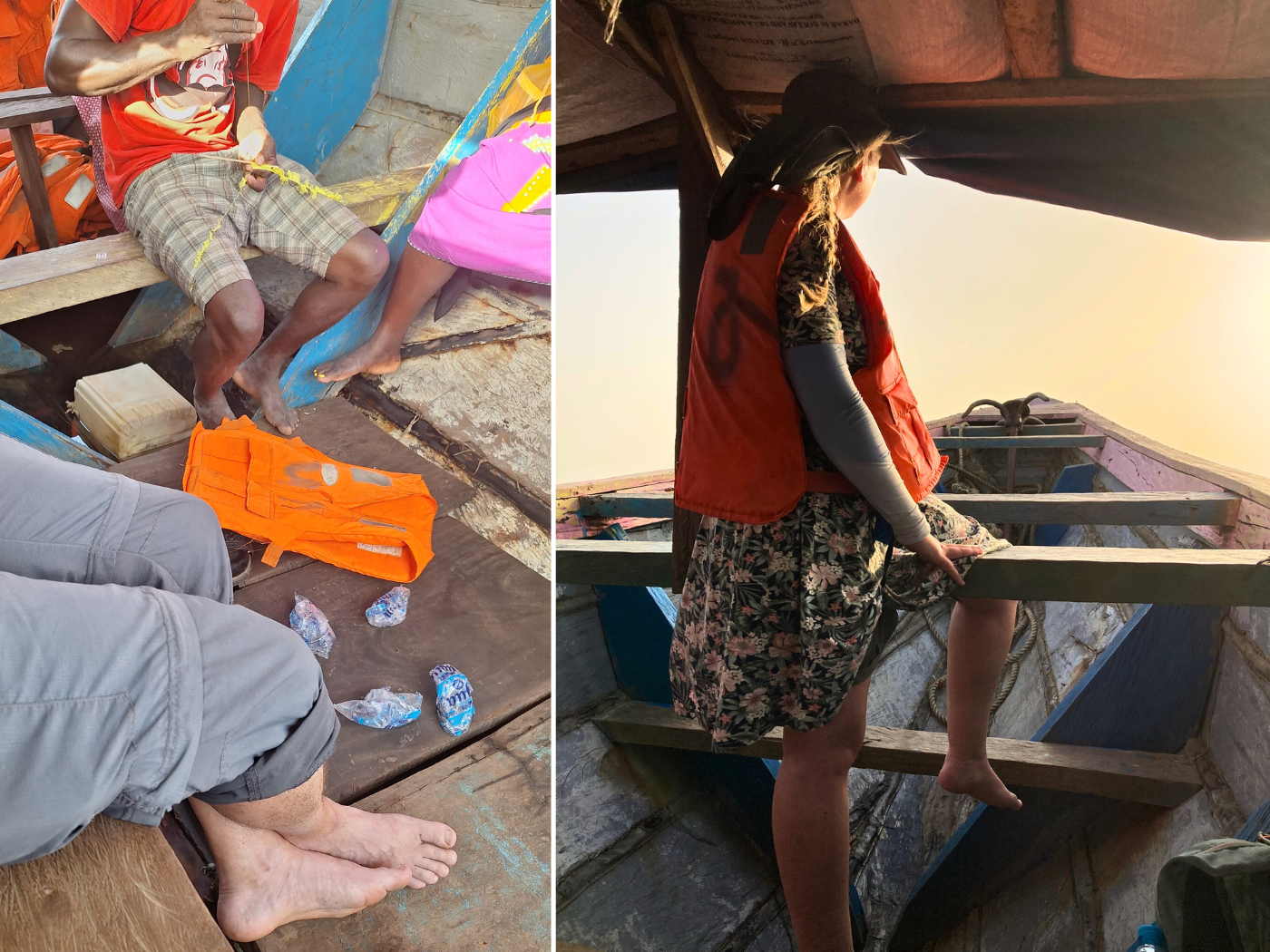
The baby on board starts yelling, Jonas is awake again, people are yelling over the music. I’m not sure if I could’ve taken a nap with this much noise. Some of the music is pretty good, though, and it reminds me of the music of Cabo Verde. One of the songs keeps mentioning kasumai, which is a word I’ve heard and seen before in Senegal and Gambia. It allegedly means “Peace with you” in Jola (spoken in Senegal, The Gambia, and Guinea-Bissau), just like Salaam Alaikum, but is mostly used in a “How are you?” kind of way.
There’s a bag of little water baggies that the passengers just grab from. They rip it open with their teeth and mostly chug it in one go and then dump it on the floor. Better than in the mangroves, for now. I used to buy these water baggies in Honduras many summers ago. Honduras is also where I got my Yellow Fever vaccine. Speaking of, why didn’t they ask for my Yellow Card at the border?
At some point, I lose the internet connection I’ve had with MTN so far. It’s been better than anticipated. I check the map and the time and see we’re one hour into our journey and about halfway. I think the scooter tour guide did not tell the truth when he said it takes four hours. Unless it takes way longer if the boat is fully loaded.
The women are talking and looking in my direction and at my day bag. I ask them “Que paso?” and one of them says “O cangrejo” and points. I ask “Cangrejo?” and make a crab symbol with my hands. They all laugh and say yes, a crab is at your backpack. I check it thoroughly, not wanting to antagonize the crab. I need to know where it is so it won’t spook me later. But I can’t find it. I hope it didn’t climb inside.
The baby girl screams again and one lady does the lord’s work by yelling back and telling the girl to shut up. Once she has her attention, she entertains the child with funny faces.
At Jonas’ bare foot, I see water slowly dripping into the hull from a hole that’s already been plugged. I’m a bit worried for when we cross the Cacheu River as it’s quite windy today.
I sometimes climb up to look over the bow of the boat. The mangroves are tall and beautiful and incredibly dense. I don’t think I’ve seen mangroves this happy ever before. In many places, they’ve recently been planted to fight coastal erosion. And no wonder, this route we’re taking from São Domingos goes through a Ramsar Site called Cacheu River Mangroves National Park. We’ve passed a couple of clearings in the mangroves where people have started farms and planted palm trees. But the sea level rise threatens both humans and nature.
Arrival in Cacheu
I’m up and ready when we approach the mangrove route emptying out into the Cacheu River. The mouth slowly widens and the other shore slowly sharpens. Beyond the other shore, there’s nothing. No mountain, no hill. Just a few trees that managed to grow taller. Like the Netherlands. But part of it also reminds me of the Danube Delta, though the landscape there is significantly less flat.
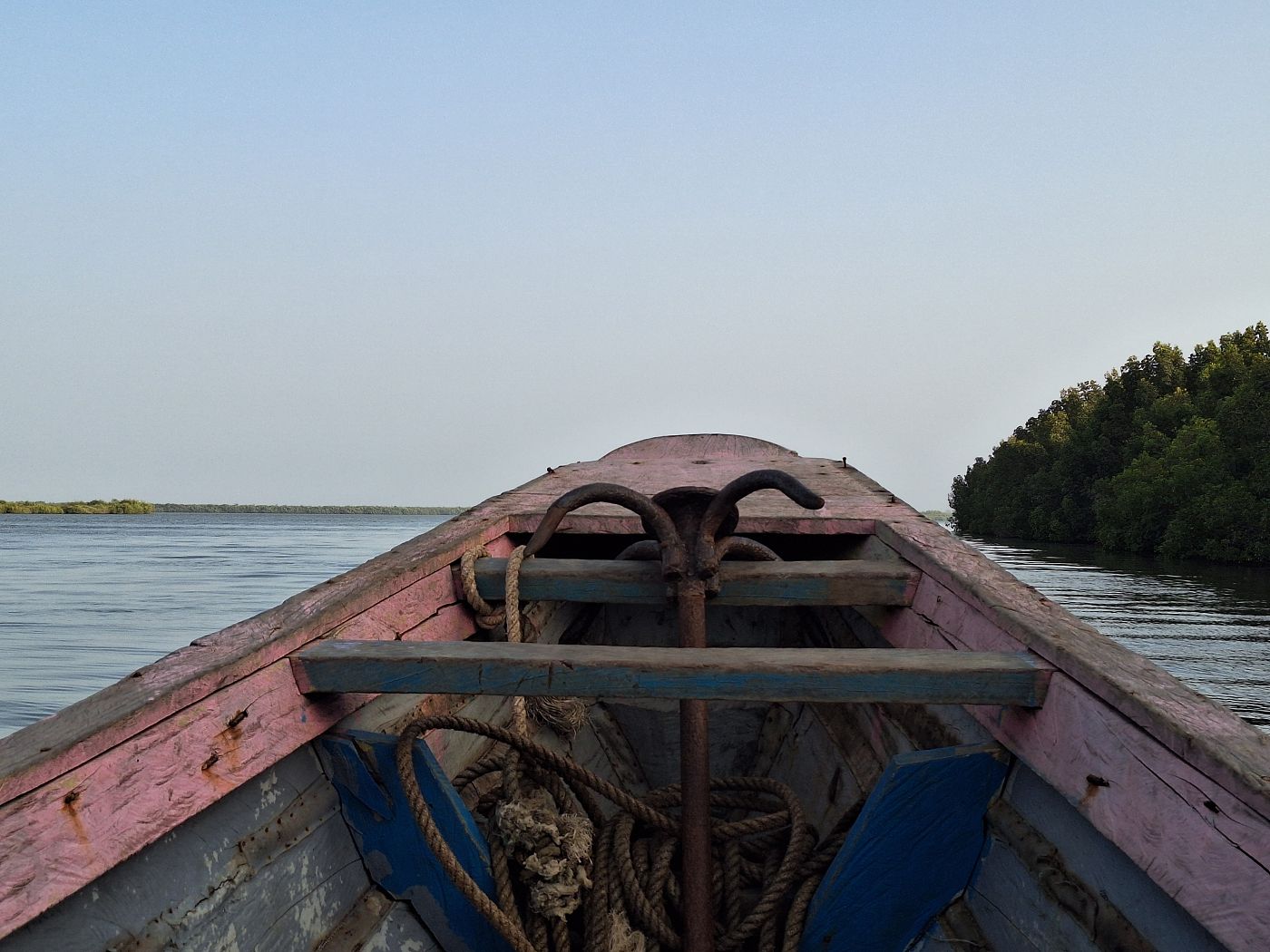
The sun is low and harsh on the landscape. Once our canoa turns the corner, the strong heawind begins to beat our boat. The boat becomes more unstable and we push against the waves. It gets a little wet, but our boatman is fully in control.
We slowly cross the river from right to left. There are telecom towers and the little outline of buildings in Cacheu. This area probably floods like crazy when the rainy season (June – October) comes. One of the boatmen climbs down and begins to scoop water from the hull once more. The boat rolls in response to all the activity and the wind.
The jetty of Cacheu becomes more defined, and it’s a proper concrete port next to many moored pirogues. I tell Jonas we can put on our shoes for this one. Our feet are completely dry. The women on board laugh when they see us cover our feet in armor.
The guys moor the boat to another wooden boat in the port and people begin to leave. The goat has priority. I take my sweet little time to climb aboard the next boat. There’s a giant hole in this other boat that leads all the way to the water below. Luckily, there’s still daylight. Otherwise I would have totally fallen in.
The pirogue journey from São Domingos to Cacheu took exactly two hours and 10 minutes, from standing on land to standing on land. Not a bad time, honestly. And I found the entire process very organized, all things considered. From the second boat, we climbed onto the concrete quay and walked to the hotel. The park of Cacheu next to the delegacia/autoridade maritima de Cacheu was full of activity around sunset.
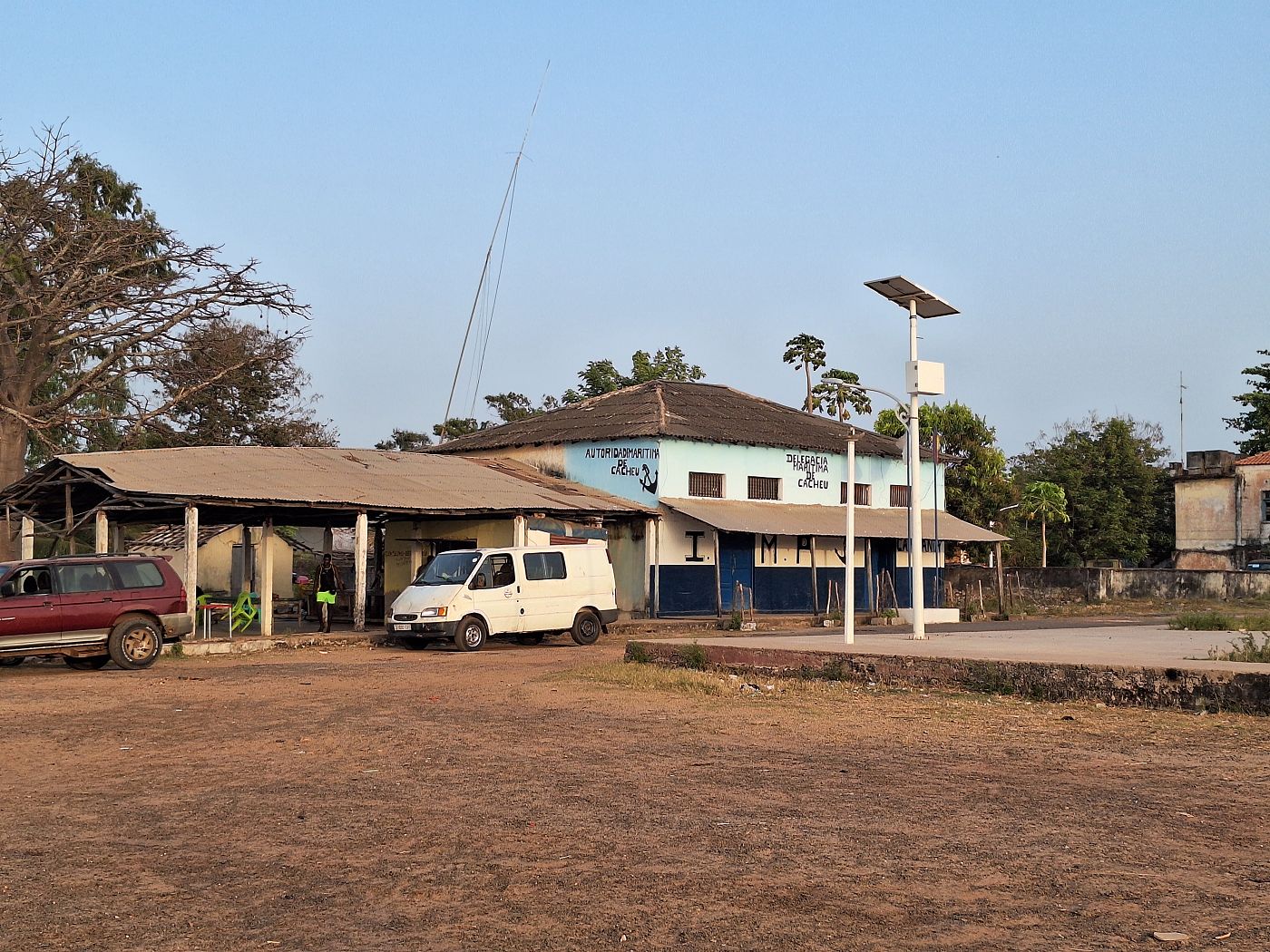
At the hotel, we were welcomed by some staff members who showed us our room. We were the only guests. Tomorrow, we’ll explore Cacheu with their help.

